PPG-EM >> About Rio de Janeiro City
Rio de Janeiro, The Wonderful City
Rio de Janeiro is known in Brazil as "Cidade Maravilhosa", Portuguese expression for "Wonderful City". It is indeed a wonderful city. Rio de Janeiro is a dynamic and modern city, with several entertainment spots spread all over the city. The city offers fun every day of the week, from samba and bossa nova concerts and lively nightlife to museums, hikes, national parks, beaches and world-famous landmarks. The mix of modern and traditional colonial architectures combined with a stunning terrain of beaches blended among mountains makes Rio a unique urban setting. Rio's landscape is so breathtaking that UNESCO named the city as a World Heritage Site and, recently, as the first World Capital of Architecture for 2020.
The Christ the Redeemer statue, an iconic symbol of Brazil, stands atop Mount Corcovado in Rio de Janeiro. This colossal statue of Jesus Christ was completed in 1931 and designed by Brazilian engineer Heitor da Silva Costa, with the face fashioned by Romanian sculptor Gheorghe Leonida. Standing 30 meters tall, with an 8-meter pedestal and an arm span of 28 meters, it is one of the largest Art Deco-style sculptures in the world. Constructed primarily of reinforced concrete and soapstone, the monument offers panoramic views of the surrounding Rio landscapes and cityscape. Christ the Redeemer is a significant cultural landmark, attracting millions of visitors annually. In 2007, it was declared one of the New Seven Wonders of the World
Sugarloaf Mountain, or "Pão de Açúcar" in Portuguese, is a prominent peak rising 396 meters above the harbor in Rio de Janeiro, Brazil. This natural landmark is named for its resemblance to the traditional shape of concentrated refined loaf sugar. Sugarloaf is renowned for its cable car system, which was first installed in 1912 and is one of the oldest in the world. The cable car travels between three mountain points: Babilônia Hill, Urca Hill, and Sugarloaf itself, offering riders stunning panoramic views of the surrounding beaches, mountains, and the cityscape of Rio de Janeiro. The summit provides a unique vantage point from which visitors can observe the sprawling city, the famous beaches of Copacabana and Ipanema, as well as the iconic Christ the Redeemer statue in the distance. Sugarloaf Mountain is not only a major tourist attraction but also a popular spot for rock climbing and hiking, attracting adventure enthusiasts from around the globe. Its distinctive silhouette and breathtaking views make it an unforgettable symbol of Brazil’s natural beauty.
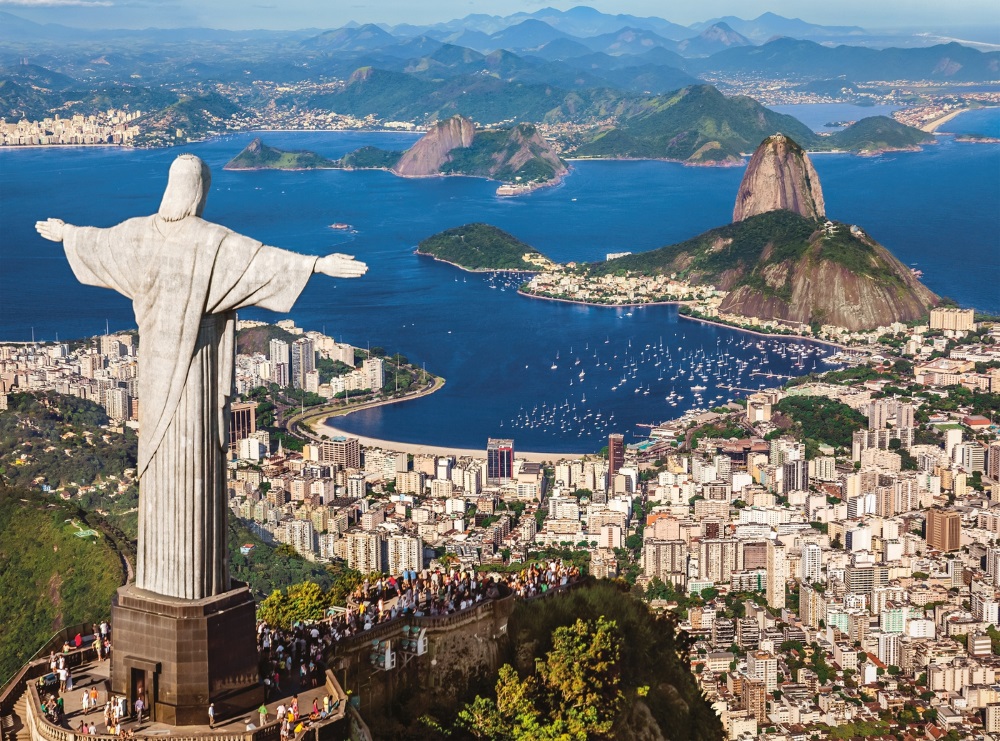
Christ of Redeemer and Sugar Loaf on background
Lagoa Rodrigo de Freitas, commonly referred to as "Lagoa," is a picturesque lagoon located in the heart of Rio de Janeiro, Brazil. Surrounded by the city's affluent neighborhoods, such as Ipanema and Leblon, Lagoa is a focal point of leisure and recreation for locals and tourists alike. The lagoon spans approximately 2.4 square kilometers and is connected to the Atlantic Ocean by a canal that traverses through the famous Ipanema beach. The area around Lagoa features a well-maintained 7.5-kilometer track that is popular for jogging, cycling, and walking. Additionally, the lagoon is a hub for various water sports, including rowing and paddle-boarding. With its stunning backdrop of the Corcovado mountain and Christ the Redeemer statue, Lagoa Rodrigo de Freitas offers breathtaking views and serves as a serene escape from the urban hustle, making it a cherished natural landmark in Rio de Janeiro.
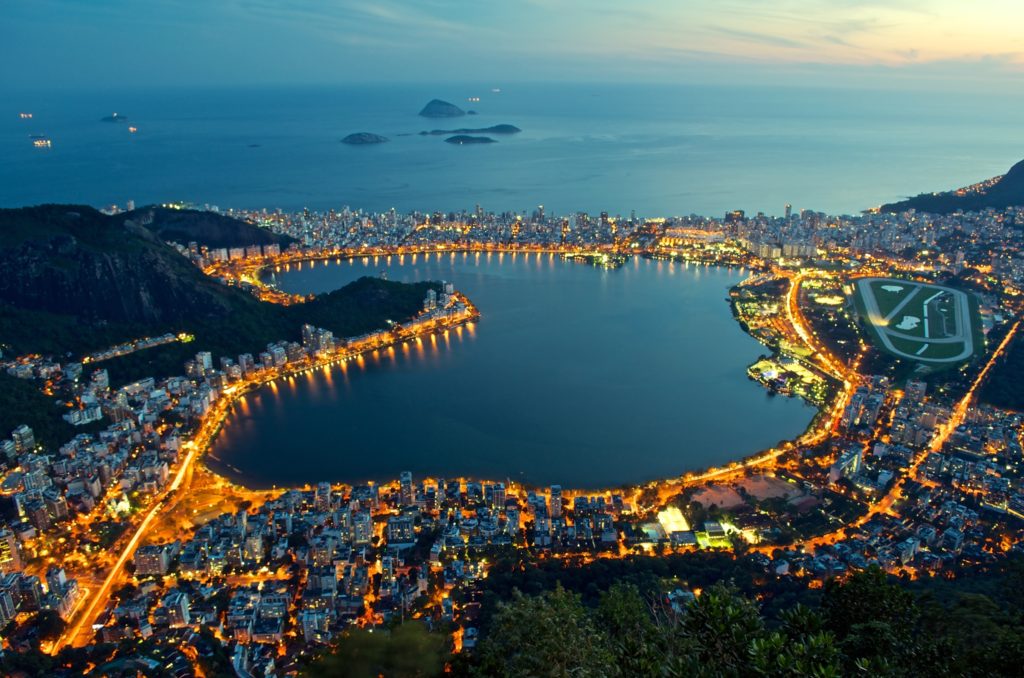
Lagoa Rodrigo de Freitas
Rio subway network has 3 subway lines: line-1 (orange) connects downtown to Ipanema, line-2 (green) connects Pavuna to Botafogo, and line-4 (yellow), recently inaugurated, that connects Ipanema to Barra da Tihuca. In addition to the subway, Rio de Janeiro has eight metropolitan train extensions connecting the downtown to the west neighborhoods such as Deodoro, Santa Cruz and Campo Grande, and other regions as Paracambi, Belford Roxo, Guapimirim and Japeri. Additionally, two tram lines compose the transportation network in downtown region: line-1 (blue) connects San Santos Dumond Airport to Novo Rio bus terminal, line-2 (green) connects Praça XV to Novo Rio bus terminal.
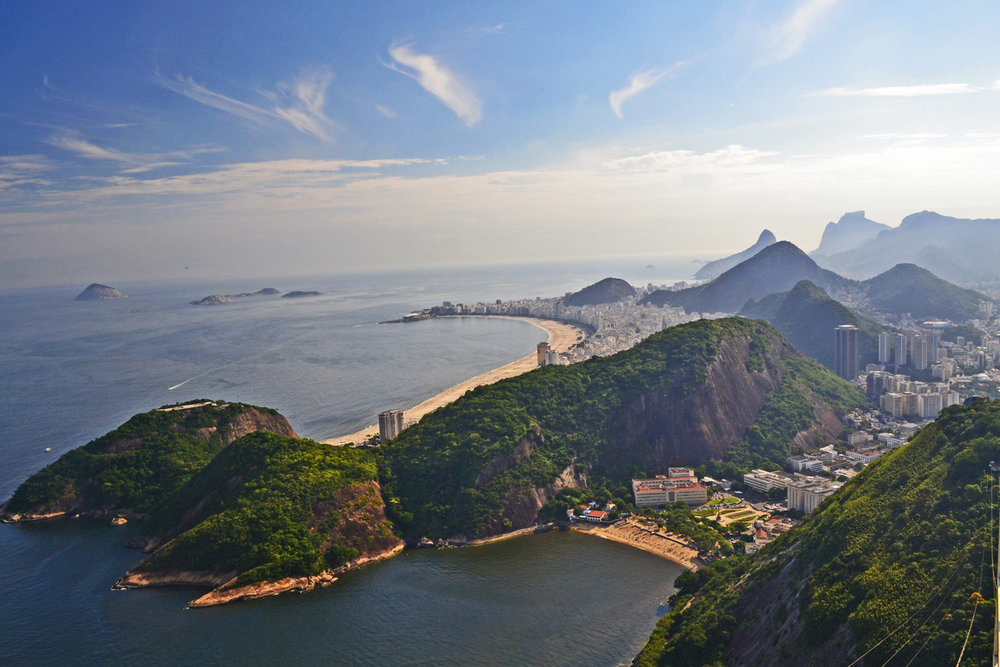
Rio de Janeiro view from above
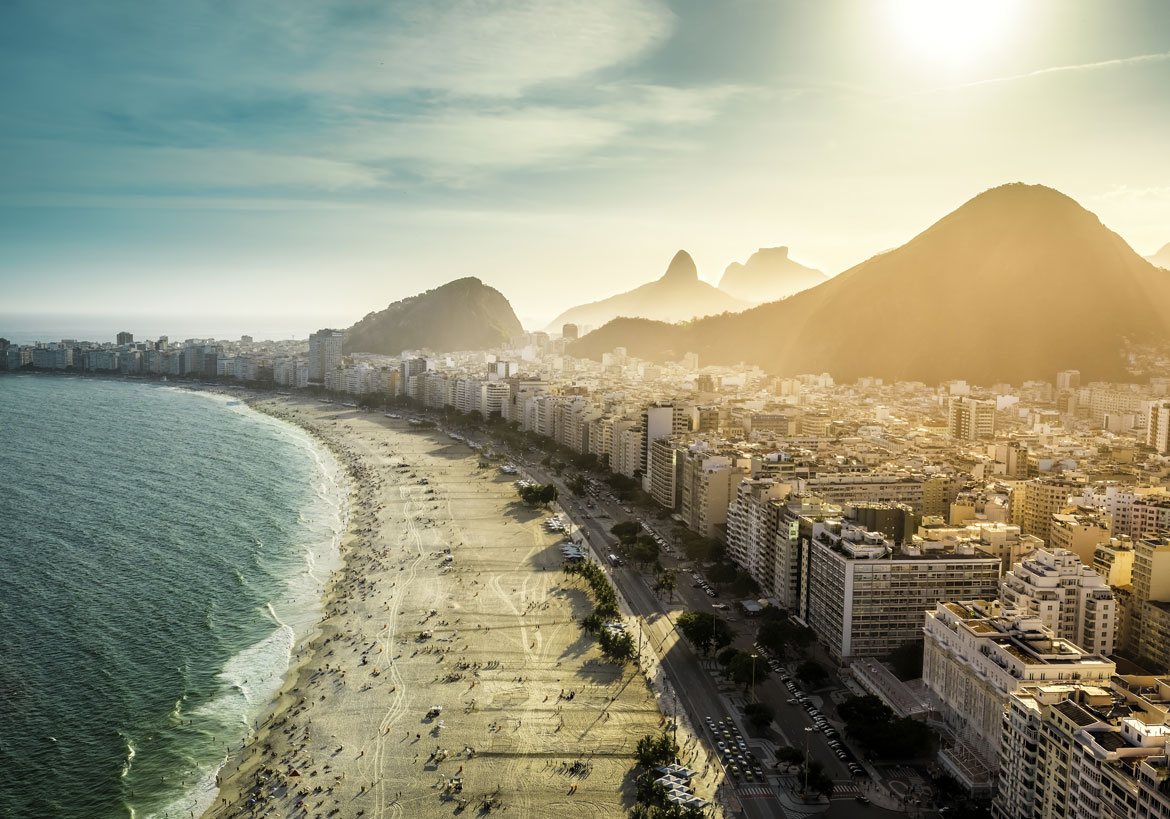
Rio de Janeiro view from above - Copacabana
Rio has over a thousand public bus routes that go to just about all the points in the city and other cities. Furthermore, Rio has a newly installed a BRT (Bus Rapid Transit) network which has a large articulated bus fleet that run over 90km in exclusive lanes throughout the city.
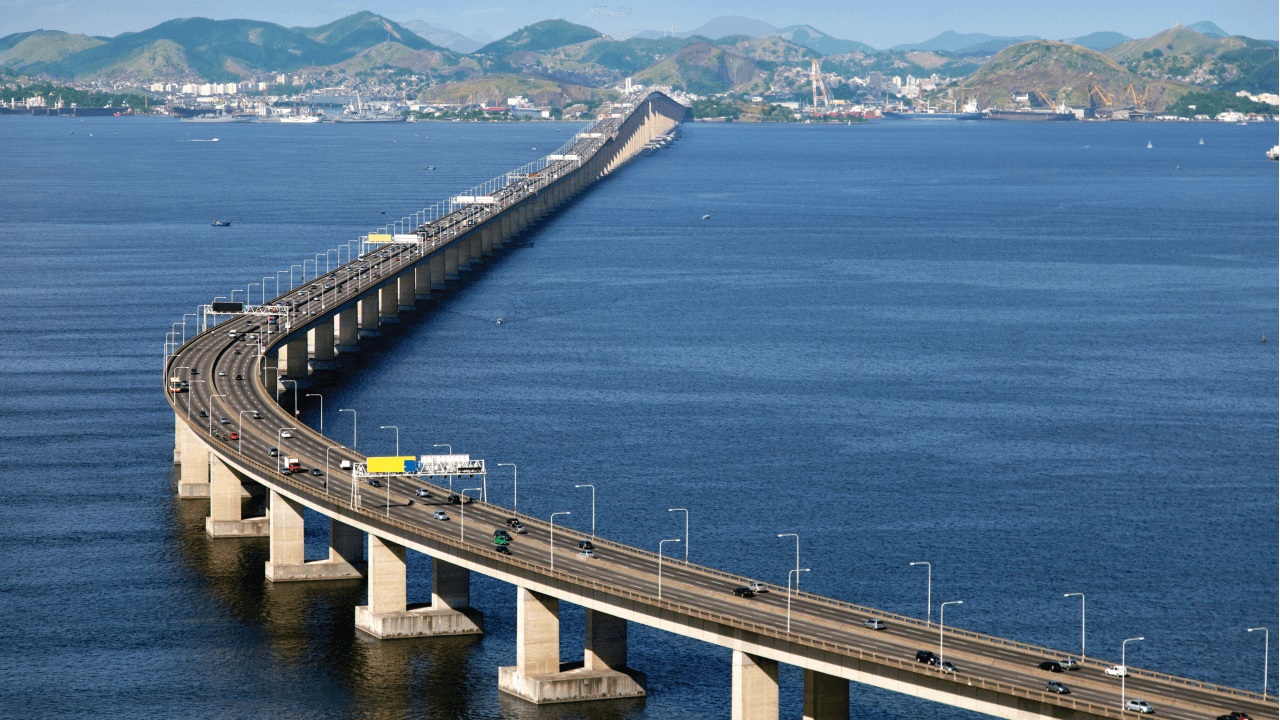
Rio-Niterói bridge (13 km) linking both sides of the Guanabara bay, a marvelous of engineering
The city of Niterói, located 13 Km across the Guanabara Bay from Rio de Janeiro, is often characterized as a more residential and quieter alternative to its bustling neighbor. As a city, Niterói boasts a high quality of life with its numerous beaches, such as Icaraí and Itacoatiara, which are popular among locals for relaxation and water sports. Architecturally, the city is renowned for the Contemporary Art Museum (MAC), designed by the celebrated Brazilian architect Oscar Niemeyer. This structure, with its futuristic, saucer-like design, dramatically overlooks the bay and has become a symbolic image of the city. Despite its proximity to Rio, Niterói maintains a distinct identity, largely due to its residential nature, which includes well-planned neighborhoods and a lower population density. This combination of scenic beauty, cultural offerings, and less hectic pace attracts those seeking a calmer living environment while still being close to the metropolitan amenities of Rio de Janeiro. Few hotels are available in the area, moreover, the transport from Rio de Janeiro to Niterói has a ferry boat network that crosses the bay in addition to intercity buses that can be accessed at many bus stops all over both cities. The ferry boat terminals are located in Praça XV in downtown Rio and downtown Niterói. More information about Niterói in Visit.Niteroi
Regardless of what type of public transport you may use, the Moovit app is recommended to help you find the best itinerary from wherever you are to wherever you want to go.
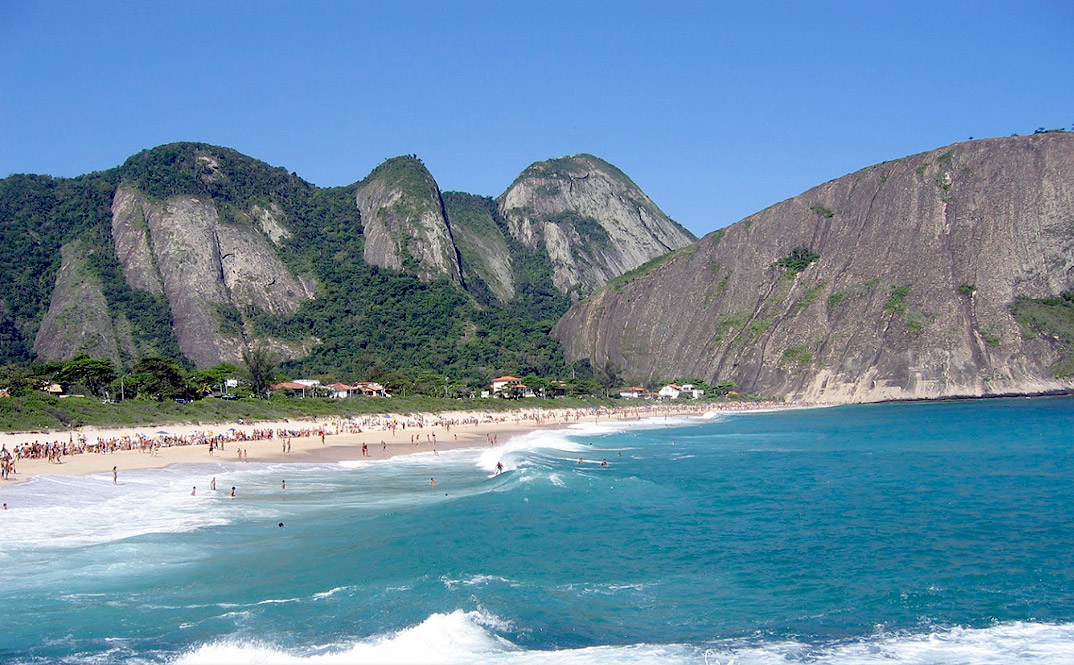
Itacoatiara beach
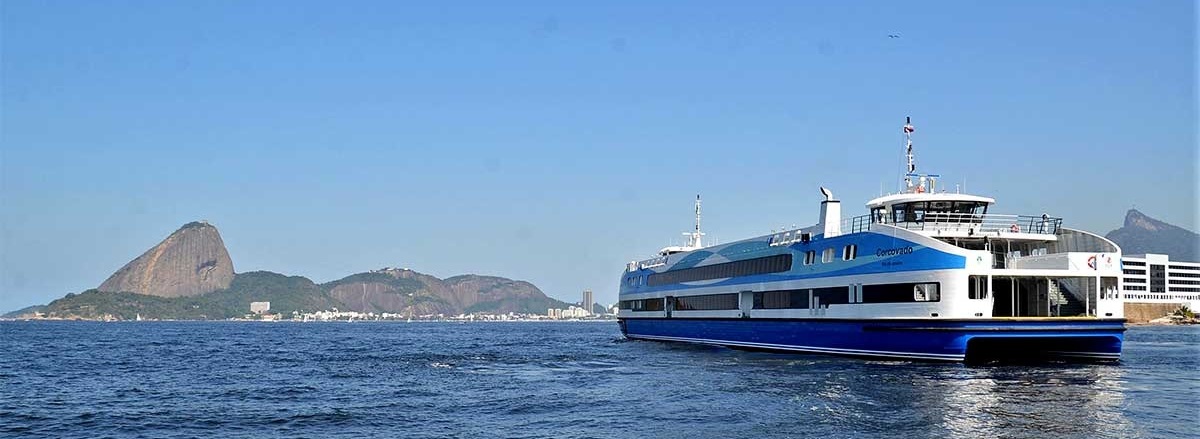
Ferry boat crossing the Guanabara bay (Niterói-Rio de Janeiro Route)
Geography
Rio de Janeiro geography is composed by beaches, mountains and forests. This diversity adds to its outstanding beauty. Although Rio is mainly a metropolitan city with a population of 6.3 million inhabitants, it has been developed around the Tijuca Forest, which is the largest urban forest in the world. Rio City is also the capital of the Rio de Janeiro state which lies in the south eastern region of Brazil. Rio is a former capital of Brazil and Portugal. To the south of the city lies the Atlantic Ocean, to the east the Guanabara Bay, to the west the Sepetiba Bay and to the north other cities of the Metropolitan area.

Map
Twenty one other municipalities come together to form the Rio de Janeiro Metropolitan area, which has a population of 13 million inhabitants. Rio de Janeiro covers an area of 1,255km² which includes islands and continental waters. It measures about 70km from east to west and 44km from north to south.
The main river that flows through Rio is the Cabuçu or Piraquê. Rio region also includes a few lagoons like Jacarepaguá Lagoon, Marapendi Lagoon, Lagoinha and the Rodrigo de Freitas Lagoon. Most of them are scenic and have a good infrastructure for tourists such as hotels, restaurants and facilities for outdoor activities.
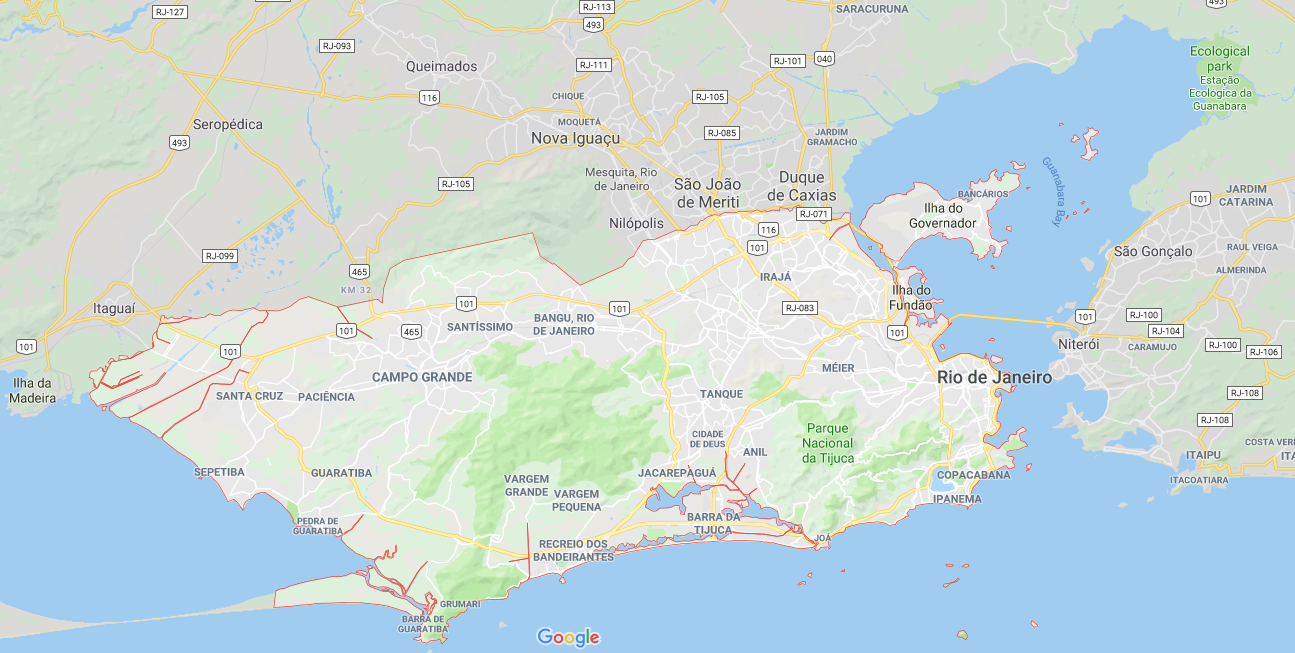
Rio de Janeiro Map
Rio has a long coastline that measures 246 km long. It is divided into three regions: Guanabara Bay (Baía de Guanabara), the Atlantic Ocean and Sepetiba Bay. Along the coastline, the visitor can admire gorgeous beaches.
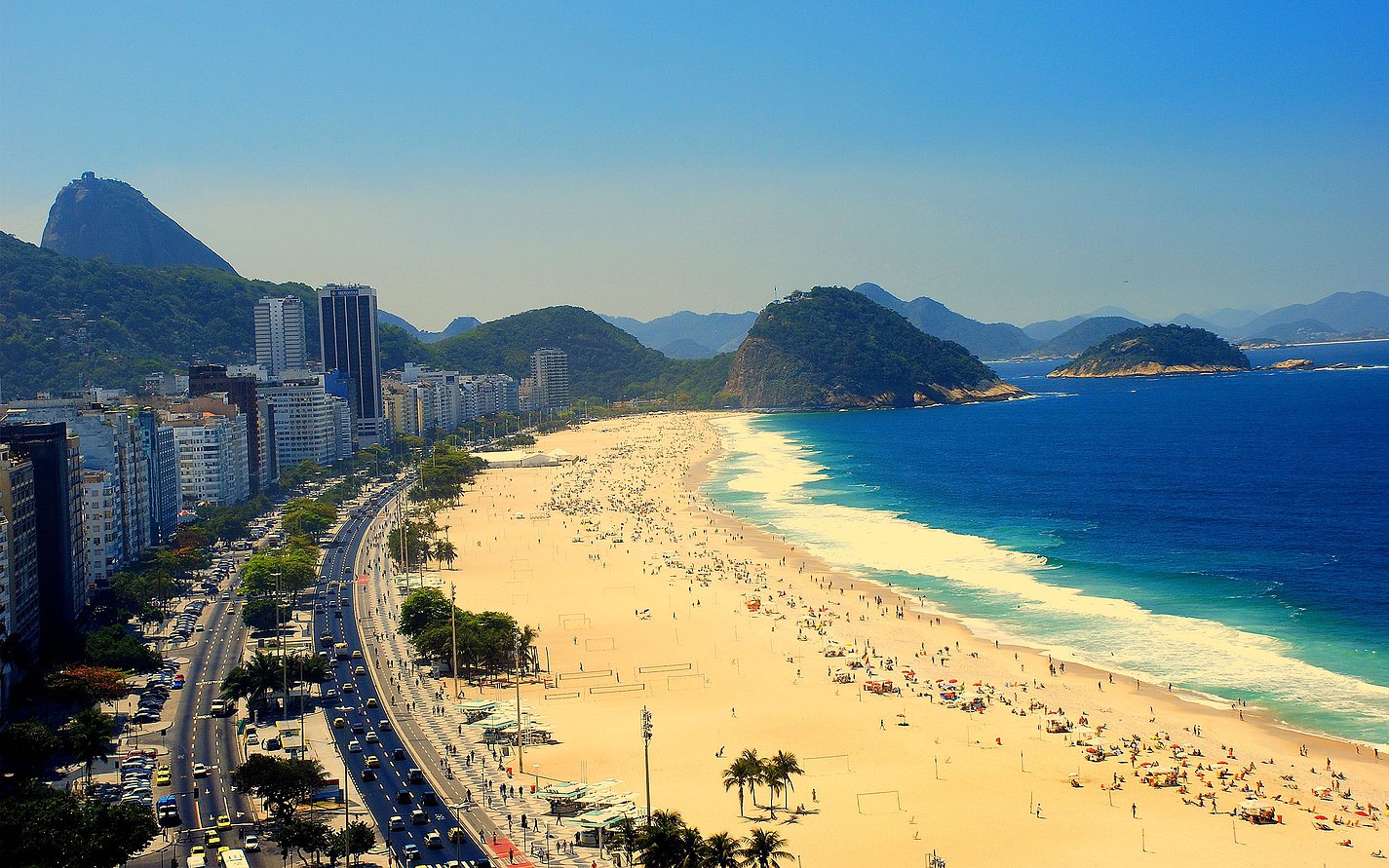
Leme beach
Weather
Rio de Janeiro city has a tropical savanna climate that closely borders a tropical monsoon climate. It is considered, by many, the best weather. It is warm and hot during the summer, and very pleasant during fall, winter and spring, though warm days can occur throughout the year. The rainy season happens during the summer (December to March). If you enjoy colder weather, you should visit mountain cities in the region, such as Petrópolis (60 km from Rio), Teresópolis, Penedo and Lumiar, in which temperatures can reach 0ºC.

Average temperature by month in Rio

Average rainfall by month in Rio
The Imperial district of São Cristóvão
The Graduate Program of Mechanical Engineering (PPG-EM) at State University of Rio de Janeiro (UERJ) is located in the neighborhood of São Cristóvão. With a privileged location, the district is close to downtown, has transport infrastructure (train, subway, and buses) and has the largest fun urban area of the city: Quinta da Boa Vista. From São Cristóvão, it is easy to get quickly to the South Zone, Niterói and neighborhoods of the North Zone, such as Tijuca, Andaraí and Vila Isabel, the latter known for the exuberance of its routes and the hustle promoted by traditional restaurants and bars. In the imperial district, there is also a connection to the Red Line highway, which facilitates access to the Tom Jobim International Airport, Via Dutra highway which leads to Baixada Fluminense and São Paulo.
Quinta da Boa Vista is a municipal park located in the district of São Cristóvão, where there is the National Museum of Anthropology and Archeology, and the Rio de Janeiro zoo. The attractions are an excellent choice for those who visit Rio de Janeiro and want to escape at least for a afternoon of the usual scripts.
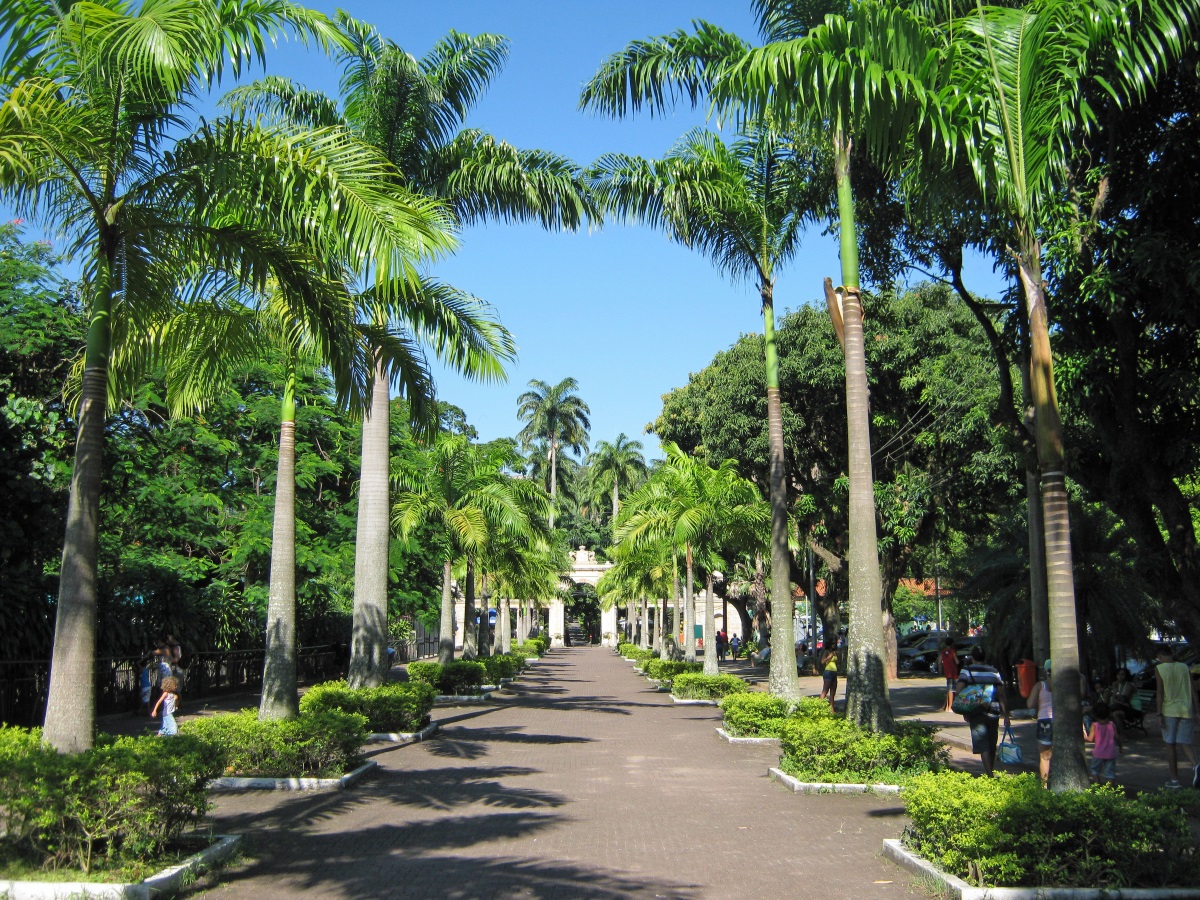
Quinta da Boa Vista municipal park
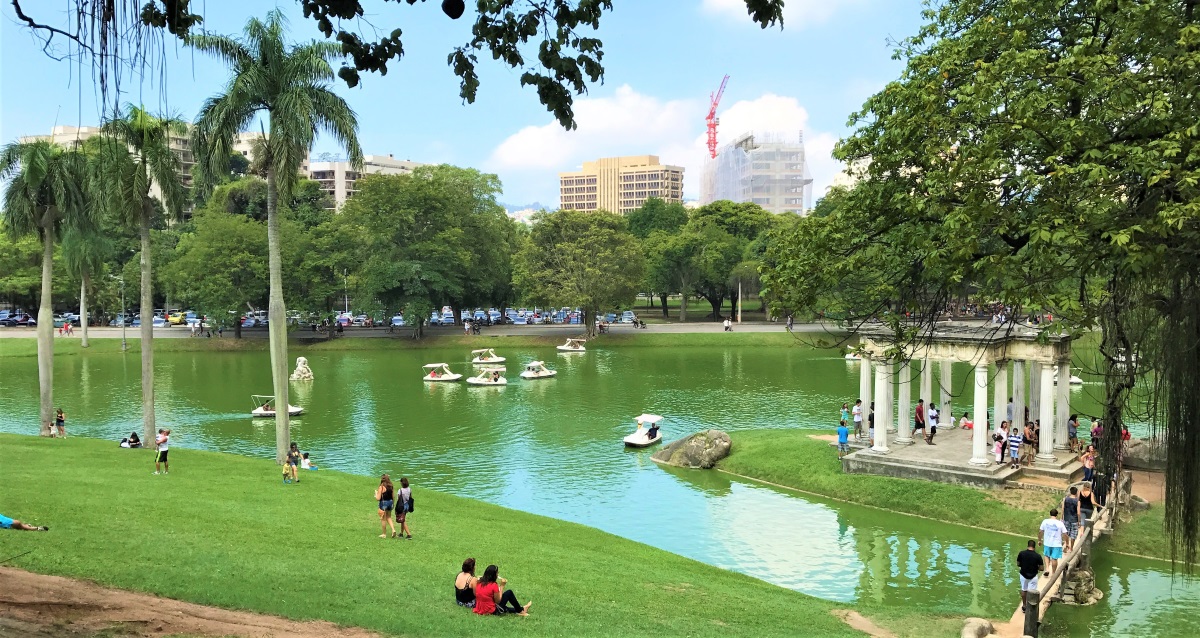
Quinta da Boa Vista municipal park
On the way to the São Cristóvão Palace, the visitor is struck by the beauty of the gardens and lakes. The building was used as the official residence of the Portuguese royal family, when the Court left Europe, fleeing from Napoleon Bonaparte’s troops. Then remained the residence of the Brazilian imperial family, after the Proclamation of Independence. It was there where Emperor Dom Pedro II was born and grew up. Currently, the palace has the National Museum, administrated by the Federal University of Rio de Janeiro. Sadly, the National Museum was hit by a terrible fire in September 2018 and is now in the process of reconstruction. On the neighborhood, visitors can also find the Military Museum Conde de Linhares, the Museum of Astronomy and Related Sciences, and the Rio de Janeiro Zoo.
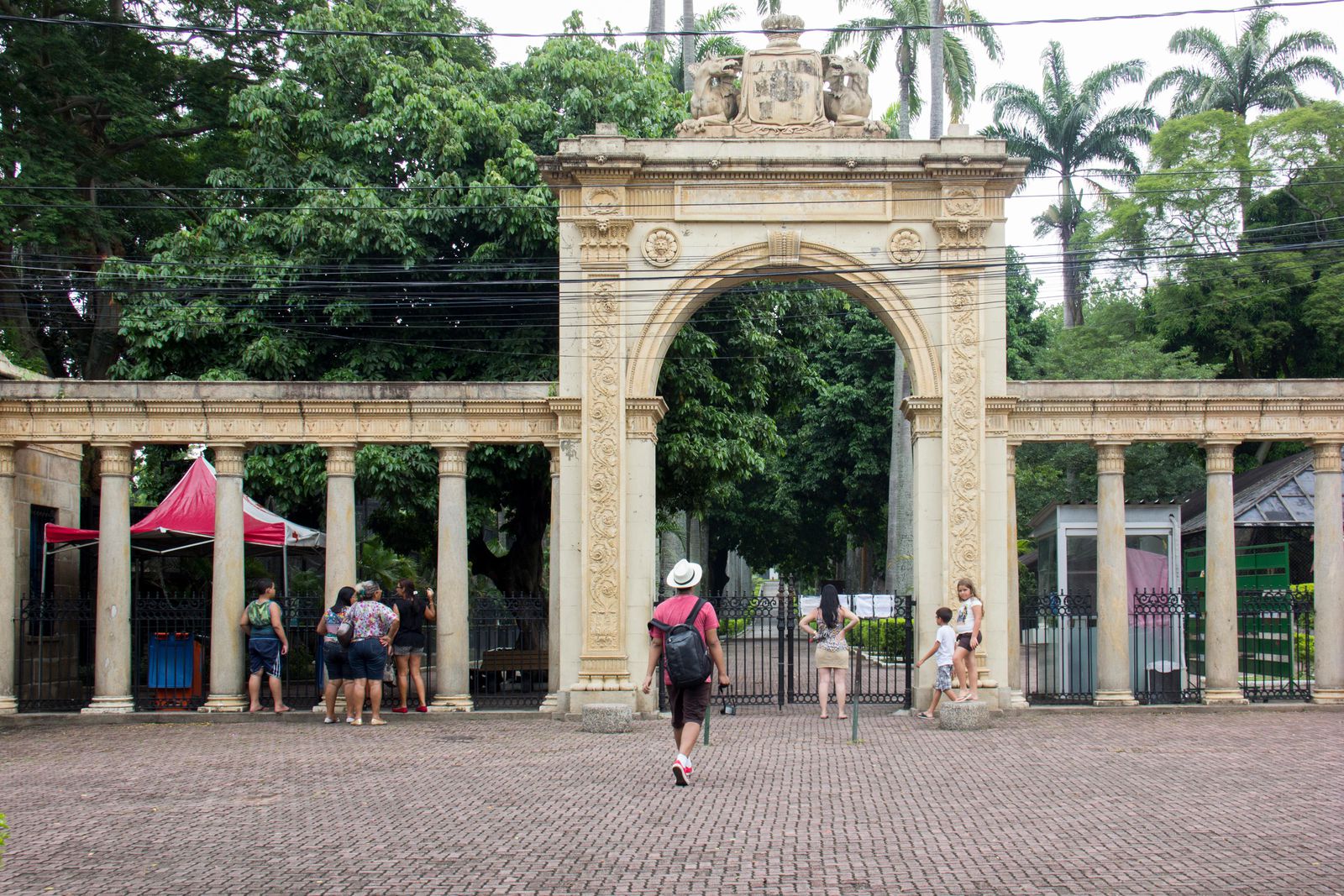
Rio de Janeiro Zoo entrance
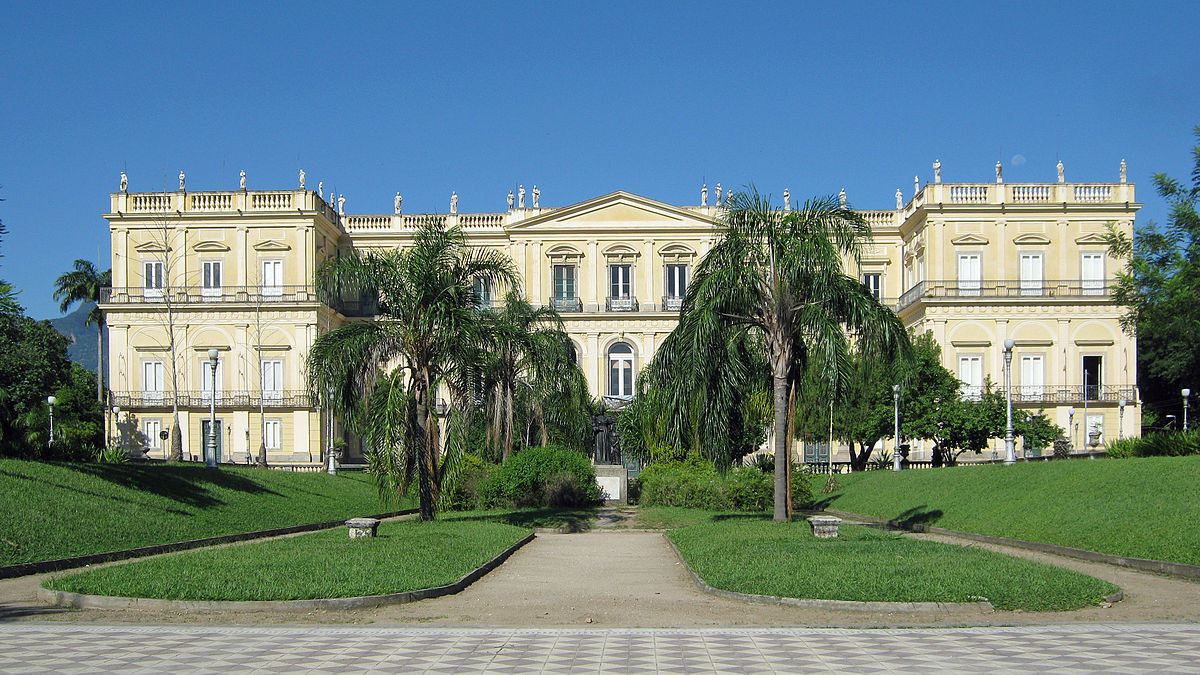
Rio de Janeiro National Museum
Furthermore, the São Cristóvão neihborhood hosts São Cristóvão's Traditional Fair which began around the 60s and the visitor can see beautiful colored panels related to Brazilian Northeastern Culture. The São Cristóvão Fair takes place in the Luiz Gonzaga Center of Northeastern Traditions and there are about 70 kiosks that offer various samples of northeastern cuisine and culture.
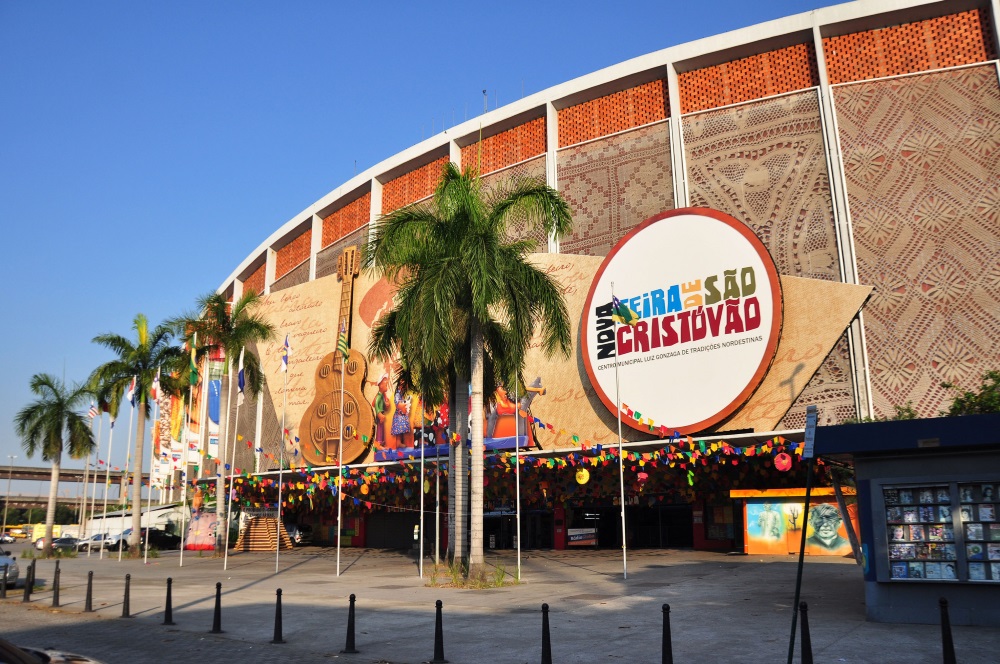
The São Cristóvão's Traditional Fair
The reader is invited to visit the electronic address of the blog Malas Prontas for more information and photos of Quinta da Boa Vista.
As mentioned earlier, the PPG-EM is located at São Cristóvão and there are several restaurants in the area where visitors may taste the local cuisine. The neighborhood also offers other cuisine options such as Portuguese and Italian. One may also grab a quick bite at bakeries and snack bars.
Monuments and tourist spots in Rio
Christ of Redeemer
The Christ of Redeemer is located on the top of the Corcovado mountain and is one of the most visited tourist spots of Rio. It is the biggest and most famous Art Déco sculpture of the world. The Christ statue started to be planned in 1921 and it was developed by the engineer Heitor da Silva Costa and took over 5 years of job to be completed, from 1926 to 1931.
It’s located at Parque Nacional da Tijuca, 710 meter above sea level, where everybody can enjoy one of the most beautiful views of the city. It was elected one of the Seven Wonders of the World by the "New 7 Wonders Foundation" Swiss Institution. The monument can be accesses by train, van and car.
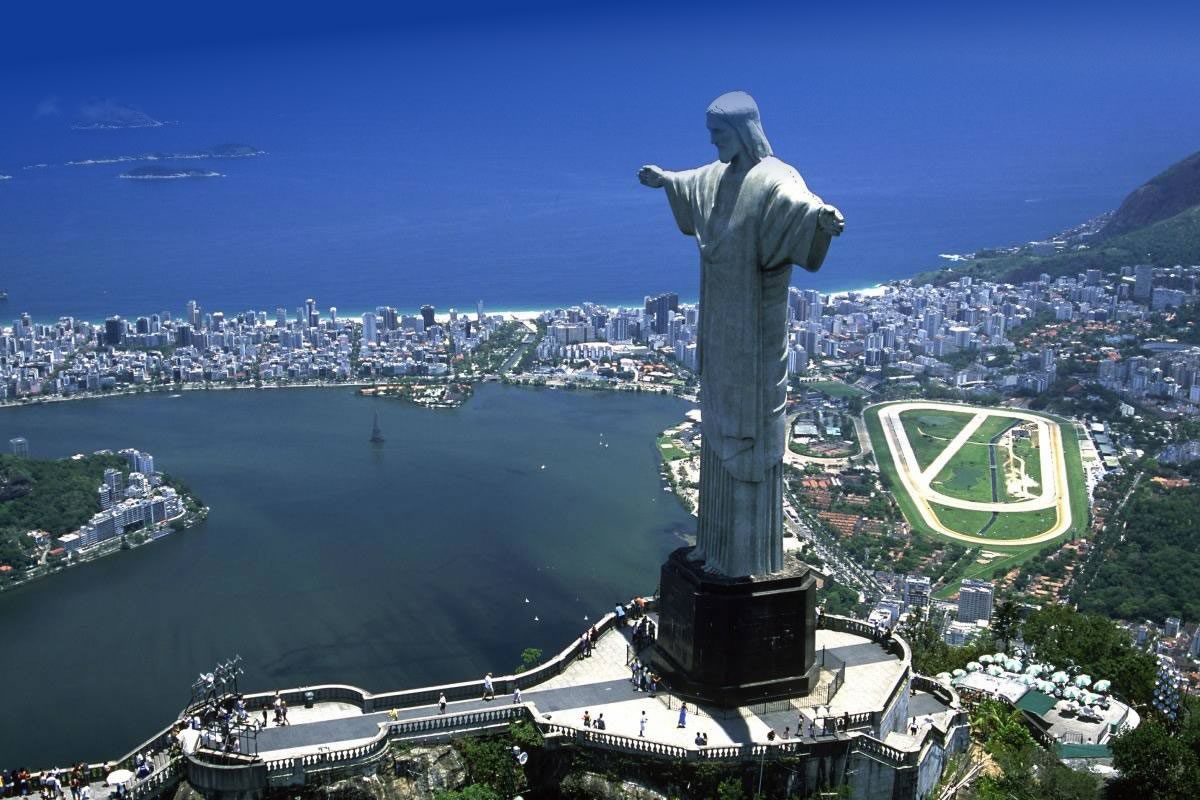
Christ of Redeemer
Sugar Loaf
One of the most beautiful post-cards of Rio de Janeiro offers a gorgeous view of the whole city. From Praia Vermelha, visitors take the first cable car to the Urca hill, and from there a second cable car takes you to the top of the Sugar Loaf hill, which is 396 meters above sea level.
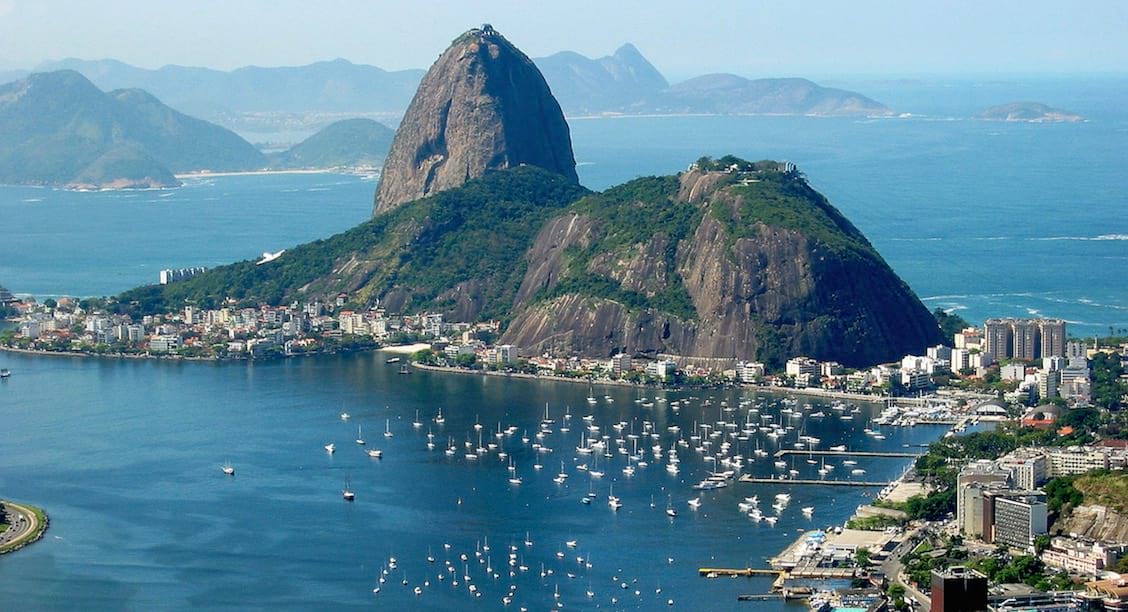
Sugar Loaf
Inaugurated in 1912, the Pão de Açúcar cable car was the first cable car in Brazil and third in the world, linking the Morro da Urca to the Morro do Pão de Açúcar. Since then, more than 40 million people have used the cable cars.
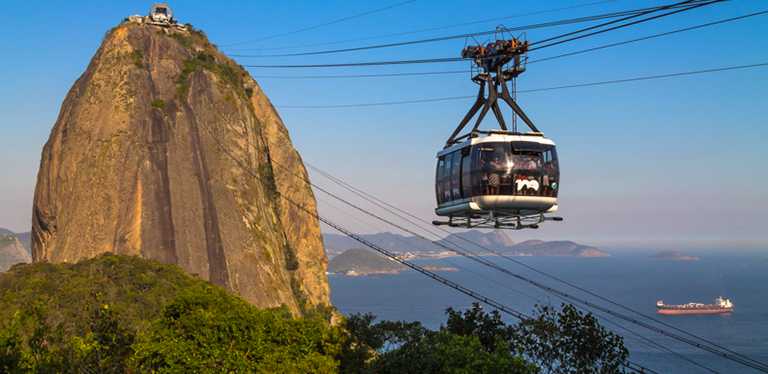
Sugar Loaf cable car
From the top of the two hills a stunning landscape of the city is seen, including Botafogo bay, the Copacabana shore and the entrance of Guanabara Bay. In summer, the amphitheater located at the top of Morro da Urca is a stage for concerts and night events, combining fun with a beautiful view of city lights.
Tijuca National Park
The largest urban forests in the world, was created in 1861 by the emperor Pedro II to reforest the area affected by deforestation caused by the cultivation of sugarcane and coffee. Tijuca National Park has many attraction, such as the Pico da Tijuca, Pico do Papagaio and Cascatinha Taunay. This preserved area of Atlantic Forest is much sought after by locals and tourists looking for the practice of physical activities, strolls and hikes. Exotic birds, native plants and fruitful trees compose the flora and the fauna of the Forest of the Tijuca.
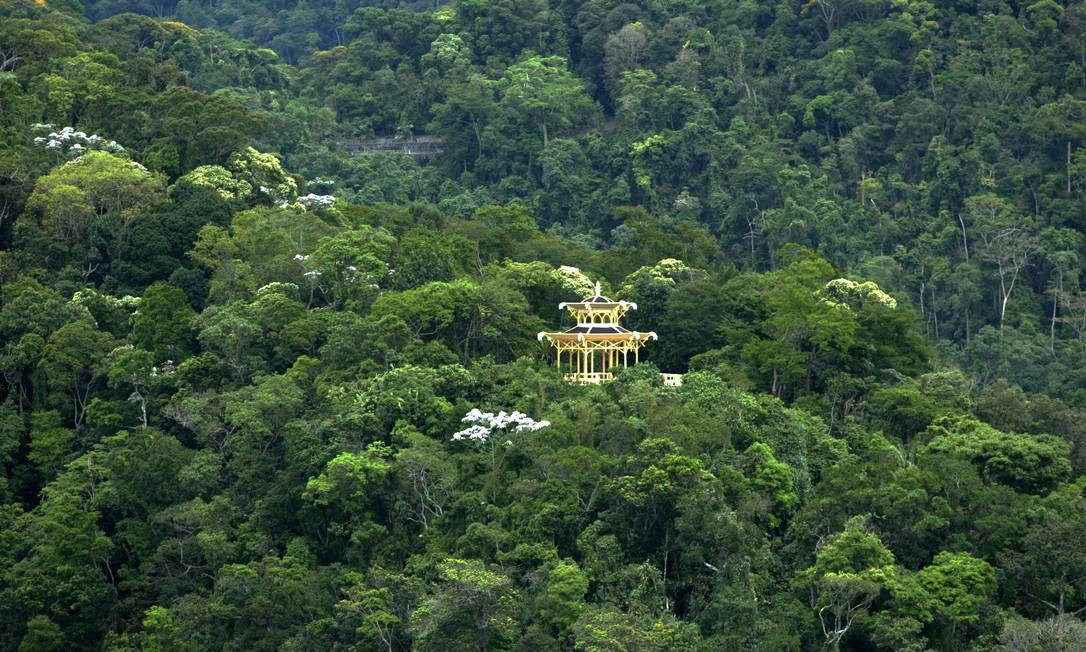
Tijuca National Park
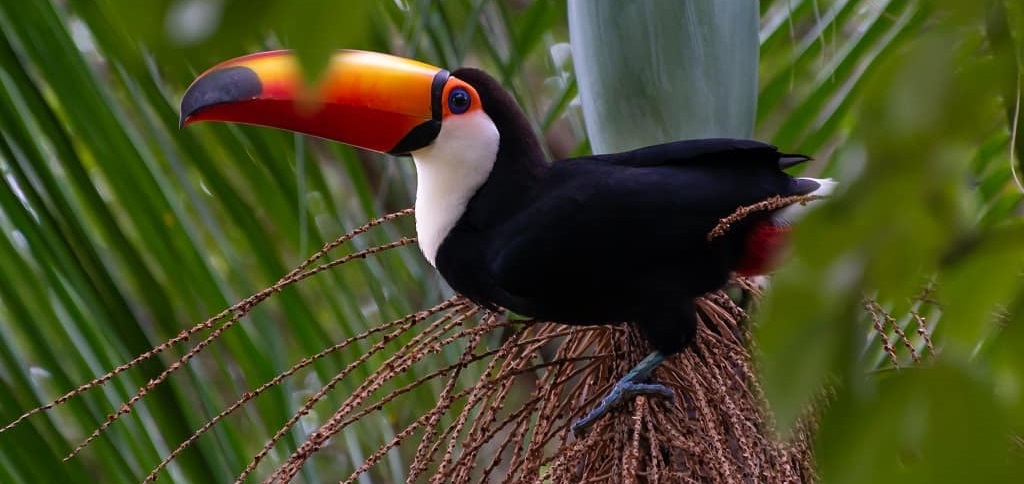
Exotic bird - Tucano
The highest point of the Tijuca National Park, with 1022 meters, Pico da Tijuca is easily accessed by a trail that starts at Estrada da Cascatinha, Alto da Boa Vista. Although it seems difficult to get to the top, which is the second highest peak in the city, the mildly steep trail makes the course enjoyable even for beginners in hiking. From the top of Pico da Tijuca, the visitor can admire a panoramic view of the city.
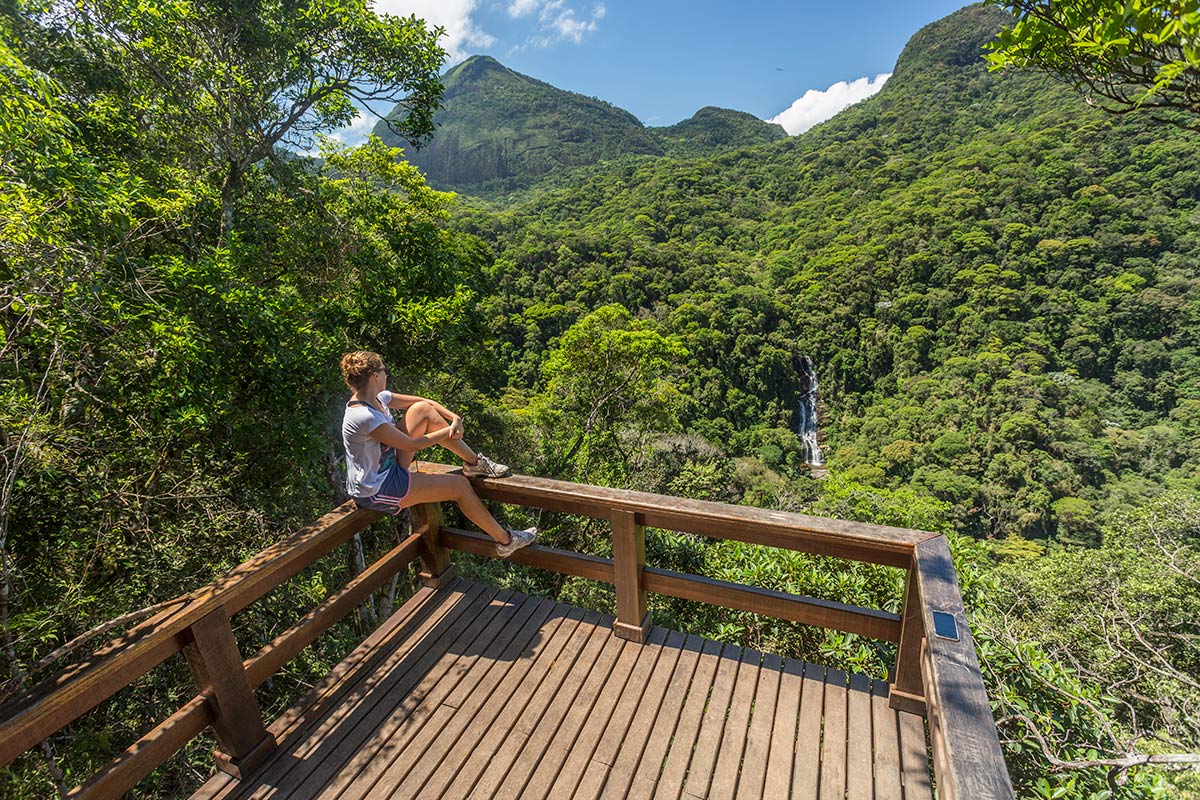
Tijuca National Park
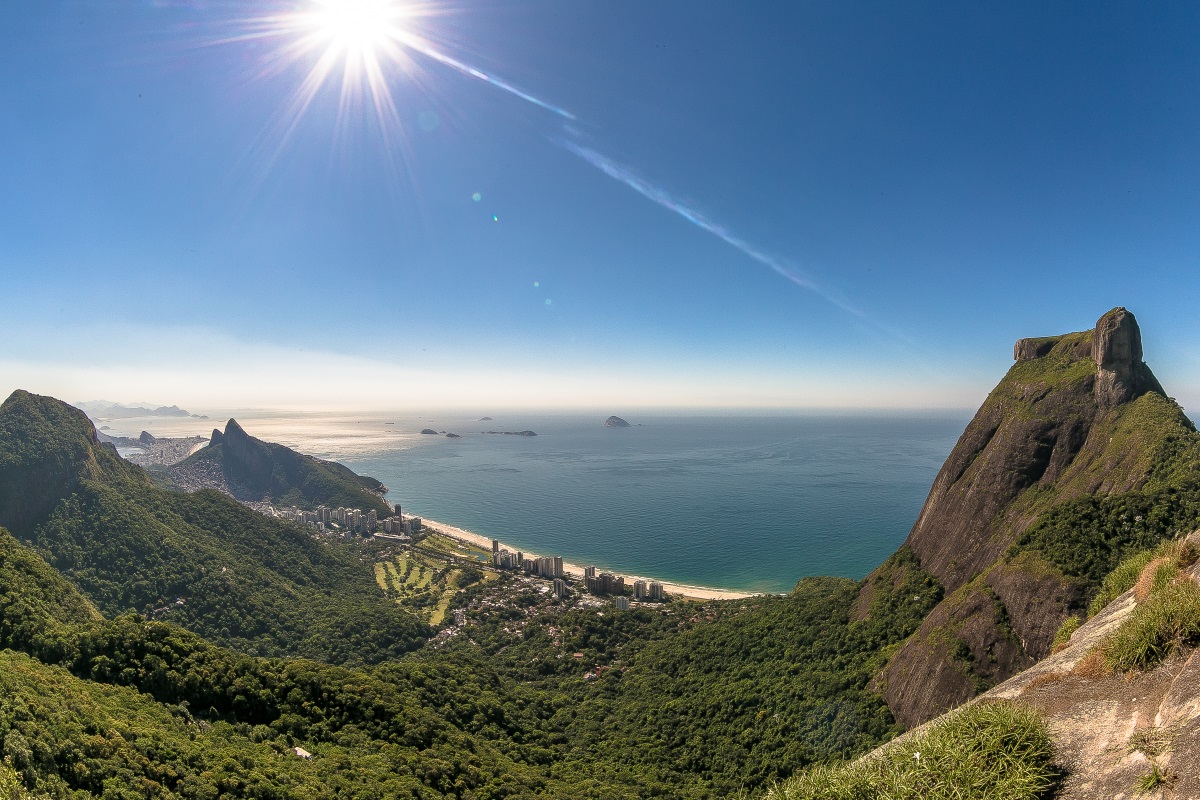
Tijuca National Park - Pedra da Gávea view from Pedra Bonita
Another attraction of the forest is the Tijuca National Park Visitor Center, which has a permanent exhibition called "A Forest in Metropolis". The exhibition is didactic, interactive, and aims to promote the conscious use of areas and resources of public use.
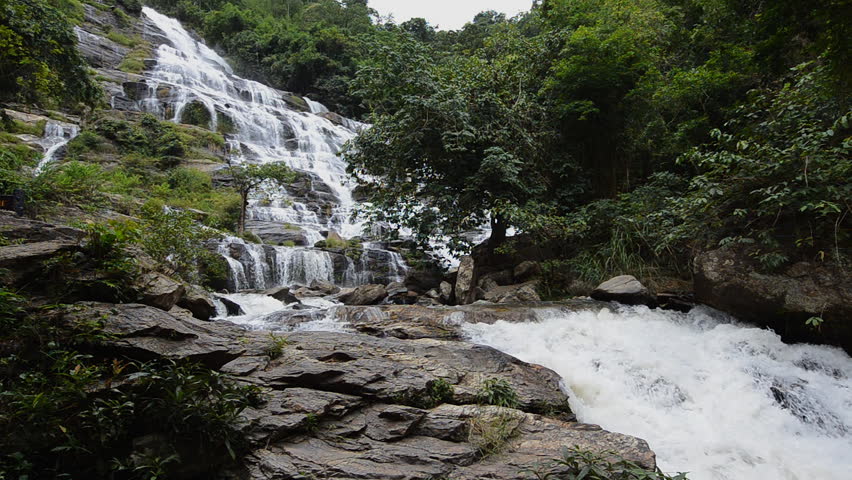
Tijuca National Park
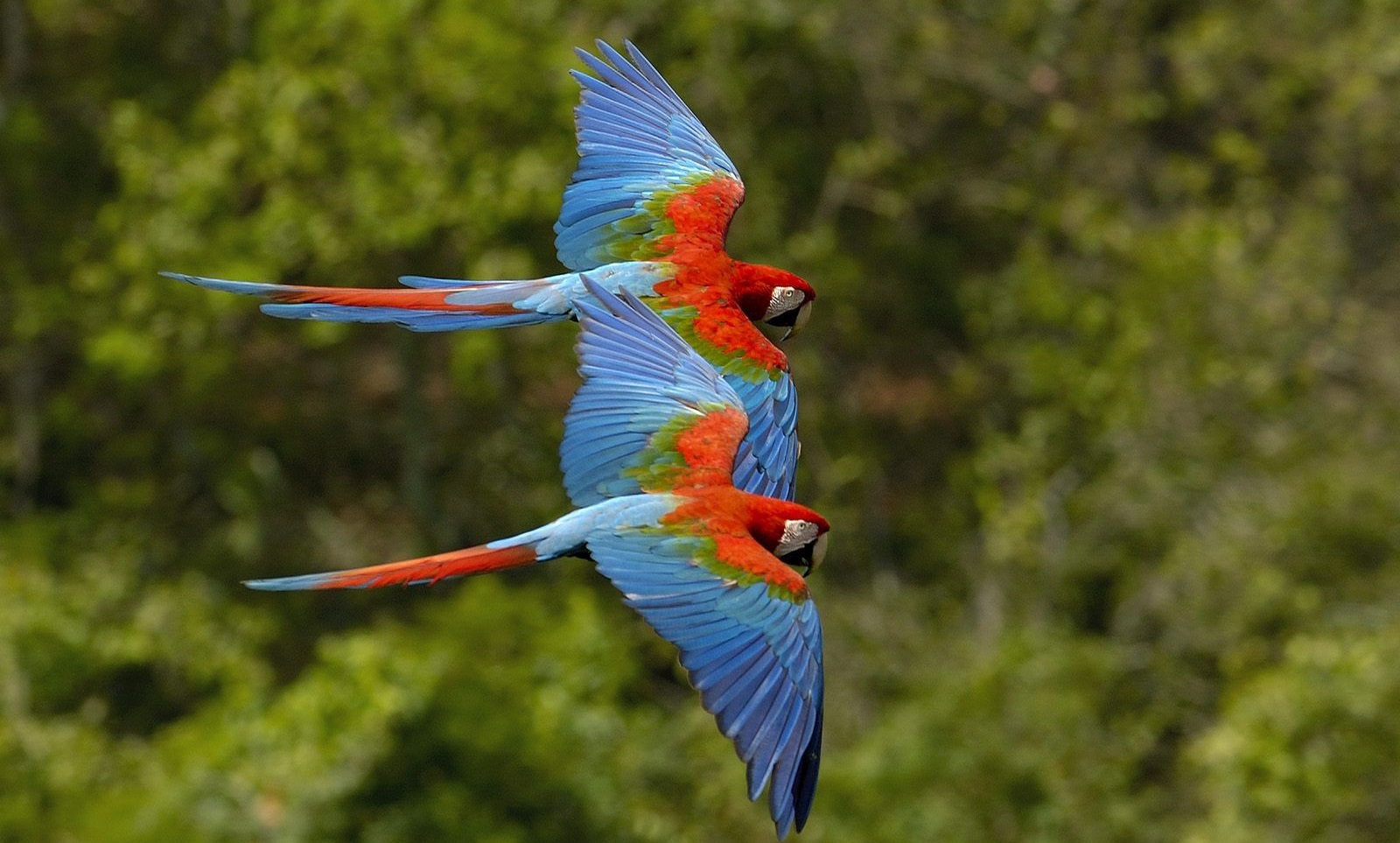
Exotic bird - Red Arara
Botanical Garden
Founded in 1808 by Dom Joao VI, the Botanical Garden is an important tourist spot in the city and widely visited by researchers who study the hundreds of species that inhabit it. With a total area of 137 hectares, of which 54 are cultivated, the Botanical Garden houses rare collections of bromeliads and orchids, as well as centenary trees and exotic plants.
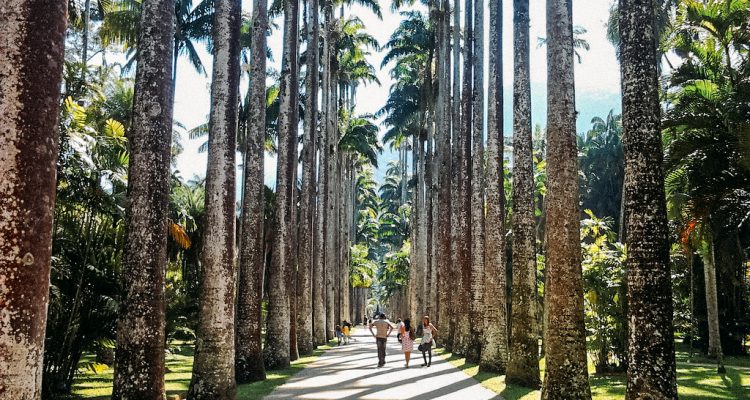
Botanical Garden
The garden also had works from the early 16th century, retaining a rich historical and cultural heritage. Amongst the monuments, we highlight the Eco and Narciso de mestre Valentim statues, the portal of the Academy of Fine Arts projected by Grandjean de Montigny, and the Japonese Garden, created in 1935. The park is also a great spot for birdwatching, as it has over one hundred different species.
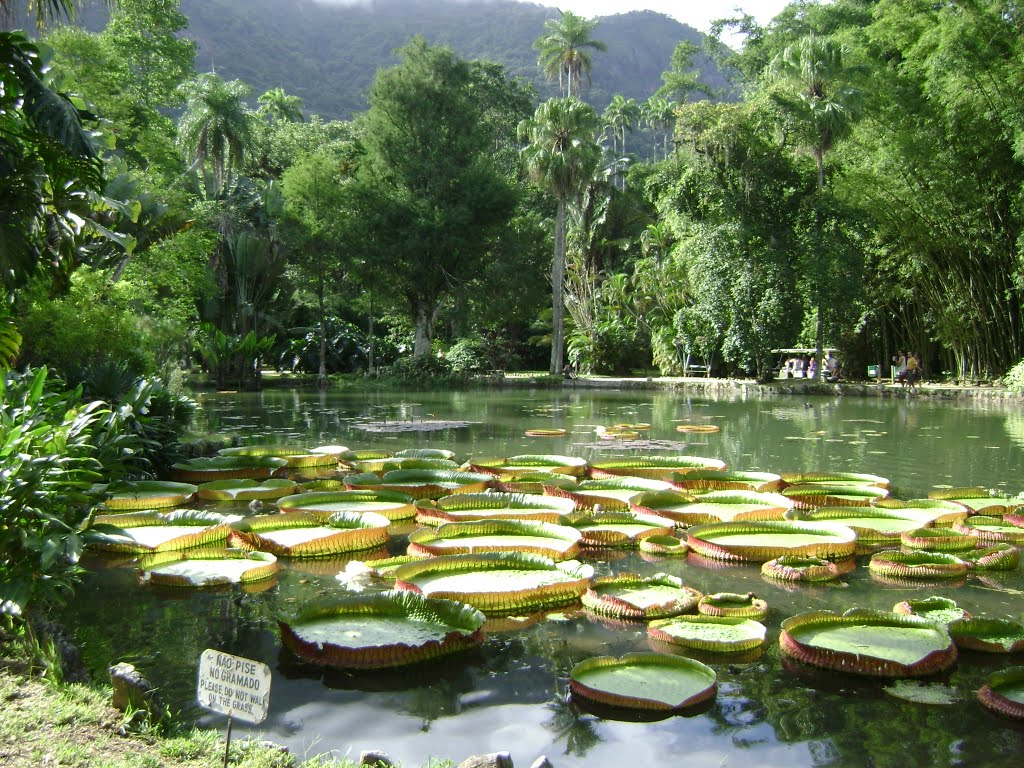
Botanical Garden
The Museum of the Environment and Tom Jobim Space also make up the attractions of the Botanical Garden, and promote important cultural exhibitions and events of the city.
Santa Teresa Tram
The famous trams of Santa Teresa that connect the center of Rio to the neighborhood of Santa Teresa are a great attraction and have become a postcard of the city of Rio de Janeiro.
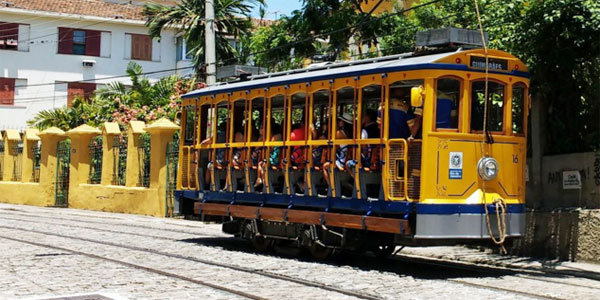
Santa Teresa Tram
The Santa Teresa Trams keep the same pattern since its foundation. The route begins in downtown, goes over the Lapa Arches, follows through the slopes in the area and goes by cultural spots such as Ruinas Park. The departure station is on Lelio Gama Street, close to the Carioca subway station. The trams depart every 20 minutes.
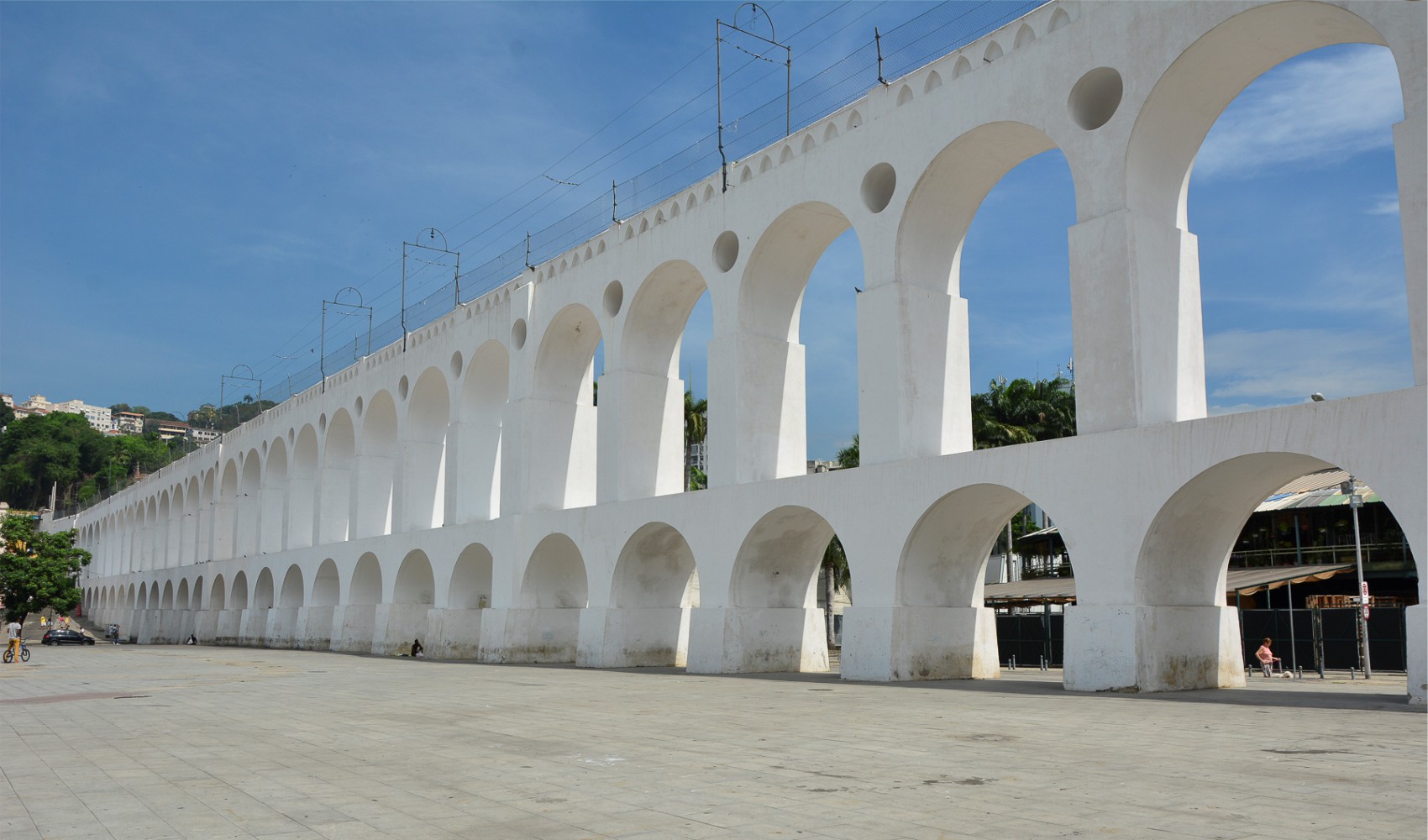
Lapa Arches
Five minutes from the Lapa Arches, connecting Santa Teresa to Lapa, there is the Escadaria Selaron (Selaron steps), a stairway decorated with colorful tiles, by the Chilean artist Jorge Selarón. Known for its energetic nightlife and bohemian vibe, Lapa is a bucolic neighborhood, with a strong artistic and cultural atmosphere.
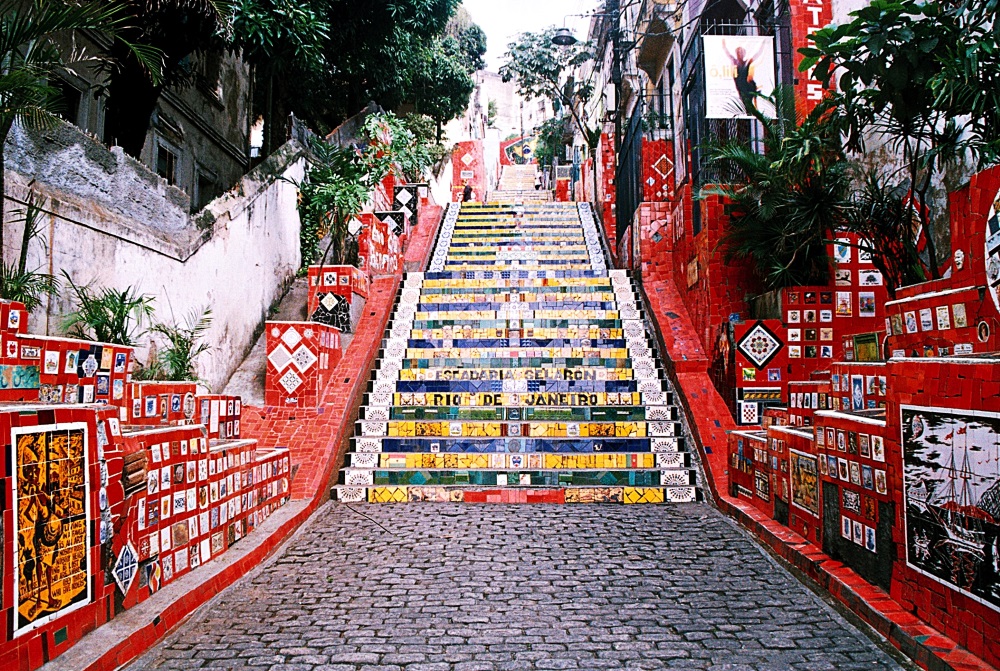
Escadaria Selaron at Lapa
Maracanã Stadium
Maracanã is the scene of the most important classics of Brazilian football and has received historical moments of international football. Monumental events, such as the thousandth goal of King Pelé in 1969, also took place on the lawns of the Brazilian football temple.
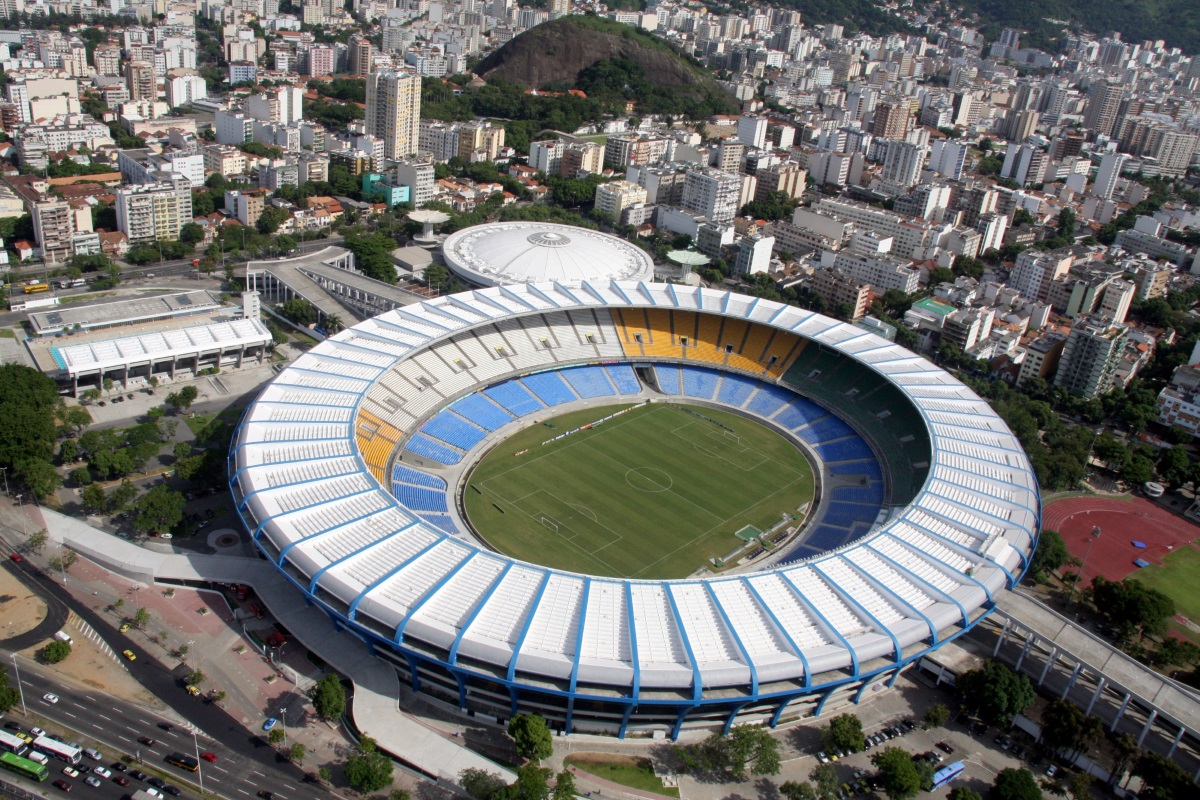
Maracanã Stadium
Opened on June 16, 1950, it has hosted World Cup games that year and a few matches of the 2014 World Cup, including the finals. It also hosted matches for the 2013 Confederations Cup, opening and closing ceremonies for the 2007 Pan-American Games, and the Olympic and Paralympic Games in 2016. In addition, Maracanã has hosted important events such as Madonna, Rolling Stones, Paul McCartney, Tina Turner, and Perl Jam concerts, and was the stage when Pope John Paul II visited Rio in 1980 and 1997.
Municipal Theater of Rio de Janeiro
Inaugurated in 1909, the Municipal Theater is one of the main entertainment venues in Brazil and Latin America. Important areas of Theater have been restored, highlighting the imposing eagle of 350kg that adorns the top of the building.
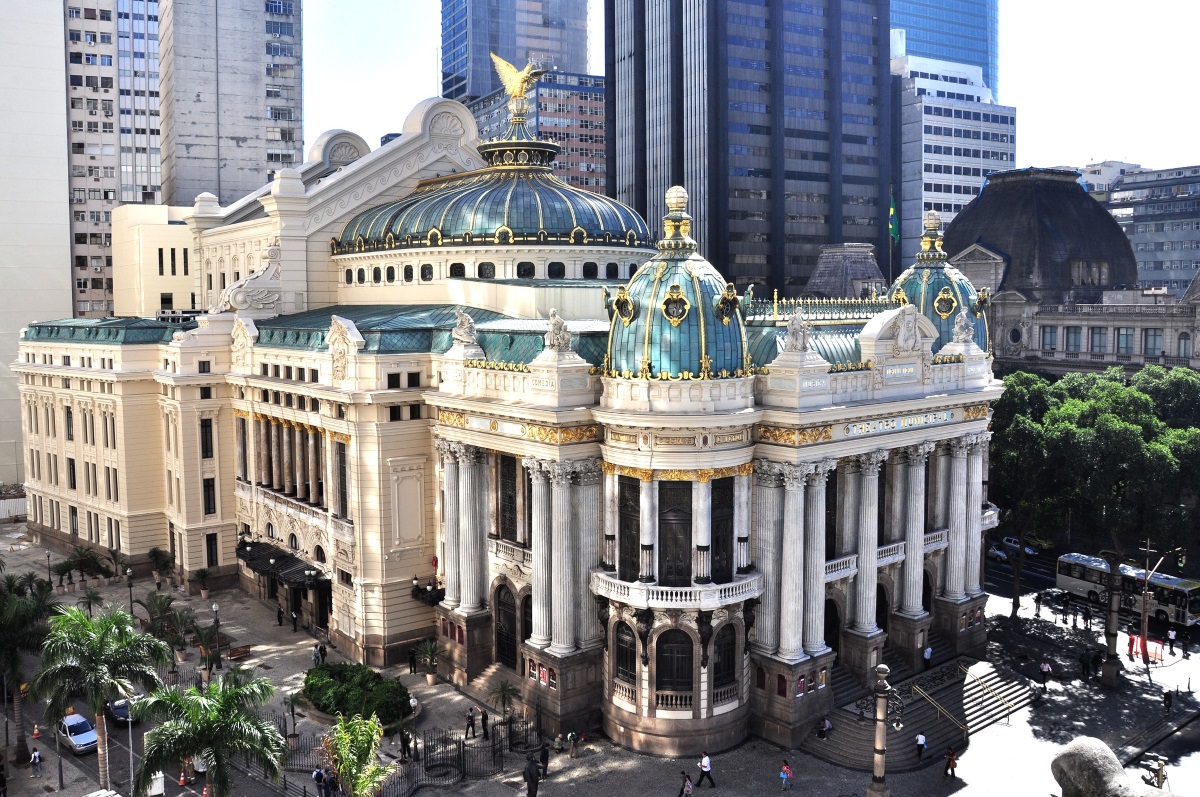
Municipal Theater of Rio de Janeiro
With over a little more than a century of history, the Municipal Theater of Rio de Janeiro has received great international artists and important names of Brazilian culture, including representatives of dance, music, opera and performing arts.
Carnival and Sambadrome
Carnival in Brazil is the biggest party in the world. The festivities occur for approximately a week on either February or March, depending on the year. Whilst the whole of Brazil celebrates carnival during this period, Rio de Janeiro attracts the largest number of visitors with approximately 5 million people celebrating in total, and an average of 2 million people out on the streets partying per day. The first carnival ever recorded in Rio dates back to 1723 with street parties and music relentlessly drifting through the city for days.

People having fun during carnival season
A samba school is a collaboration of local neighbors that want to participate in the parades of carnival, generally all with similar backgrounds. Together they plan and choreograph their performance for the big carnival parades. In total, there are over 200 samba schools in Rio de Janeiro that are divided into five leagues.
The main part of the carnival in Rio de Janeiro is the parades with the samba schools, that happen in the Sambodrome. A typical parade will include floats, party-goers and decorations from the samba schools in Rio. The parades are fun, colorful and immensely energetic, yet each school adheres to a strict parade code that was set down when the first samba school opened. The school begins with the Front Commission, a group of ten to 15 people who appear first to introduce the school and set the mood and style. This includes elaborate costumes and dancing. Next, the floats and dancers follow after. The performances are rated by a panel of judges who will at the end declare a winner – a great honor for the winning samba school.
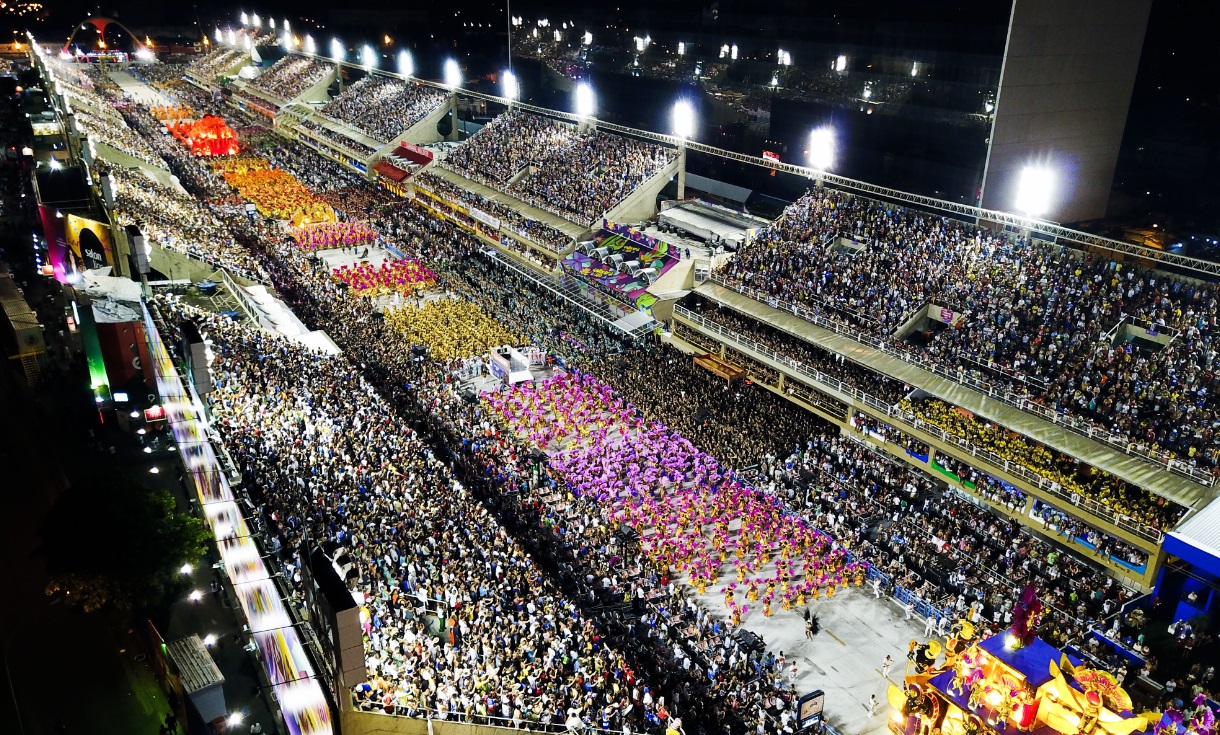
Carnival parade at Sambadrome
Flamengo City Park
How about a leisurely afternoon at one of the most beautiful spots in the city? Get to know Flamengo City Park which its gardens were signed by Roberto Burle Marx and has one of the largest spaces for sports in Rio!
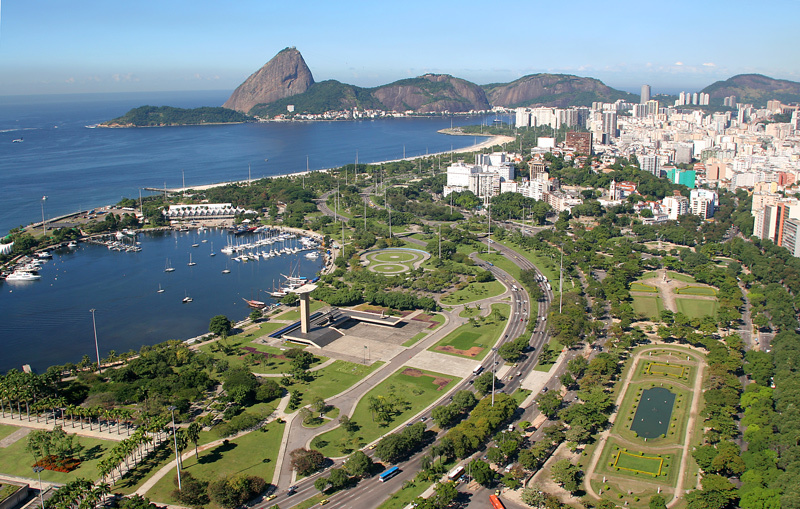
Flamengo City Park
The Flamengo City Park is known for being one of the largest leisure complexes in the city: the place is ideal for those who want to enjoy a sunny day and do outdoor activities. The area - which goes from Santos Dumont Airport, in downtown, to the beginning of Botafogo beach, passing through the neighborhoods of Glória and Flamengo - is sought, mainly on weekends, for the practice of sports such as walking, running, cycling, skating and others.
In the area known as Brigadeiro Eduardo Gomes Park in Glória, the public can enjoy soccer, tennis, volleyball and basketball courts, as well as admire the gardens designed by Roberto Burle Marx. The streets of the region are closed for cars on Sundays from 07h to 18h so the visitors can take full advantage of the park.
Olympic Boulevard and Porto Maravilha (Wonderful Harbor)
Olympic Boulevard is a mixture of history and modernity. Here we find the Museum of Tomorrow and the Museum of Art. Mauá Square used to be an amphitheater for several historical moments in Rio de Janeiro. Today it's a popular spot for locals to stroll, moreover, it also hosts different cultural events, especially during weekends.

Olympic Boulevard, Porto Maravilha
Museums
Visit the website "museus do rio" to know more about museums in Rio de Janeiro's state. Check the list of museums of Rio de Janeiro’s city at Rio museums website. A short list of some museums in the city is displayed below:
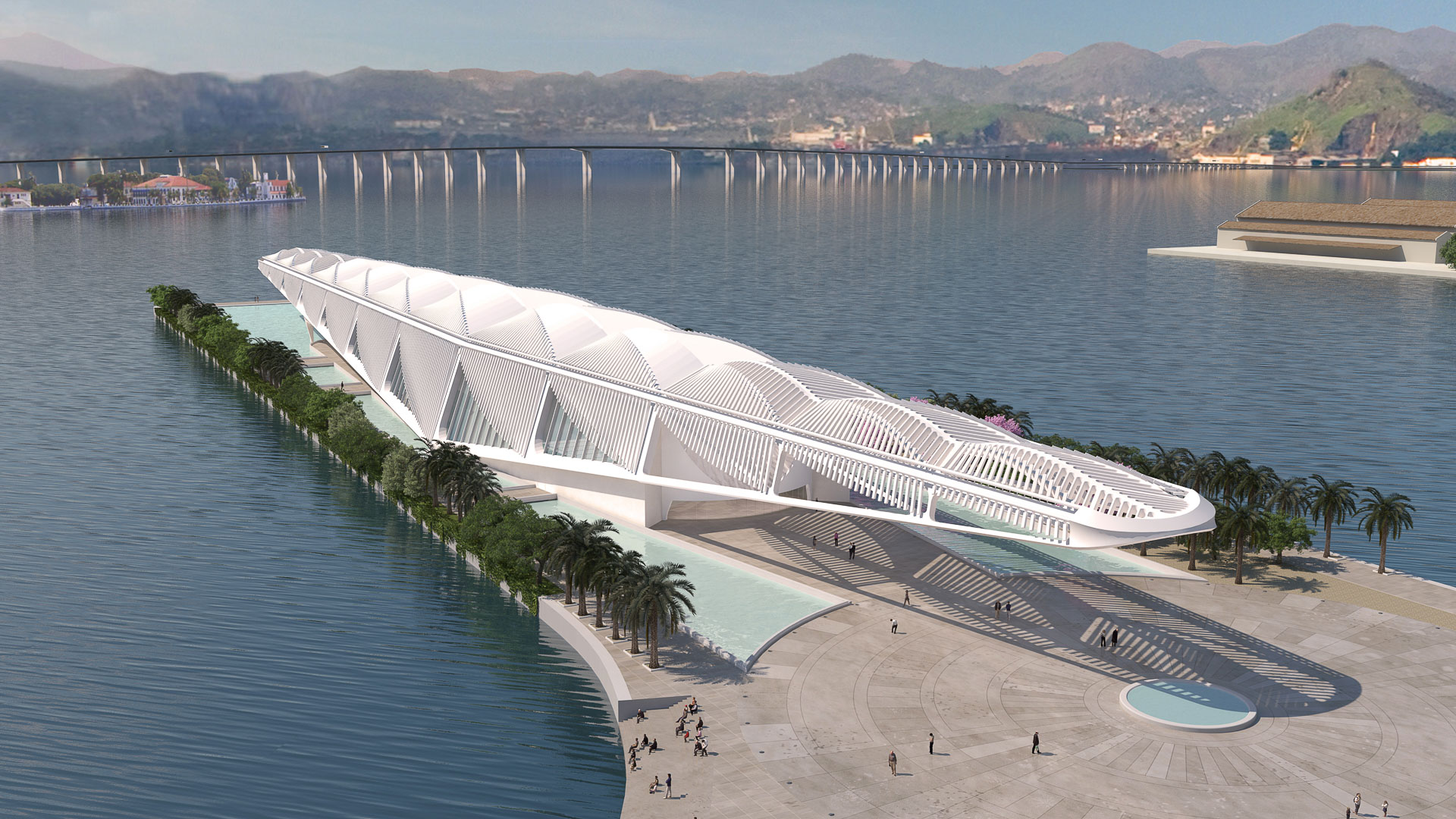
Tomorrow Museum
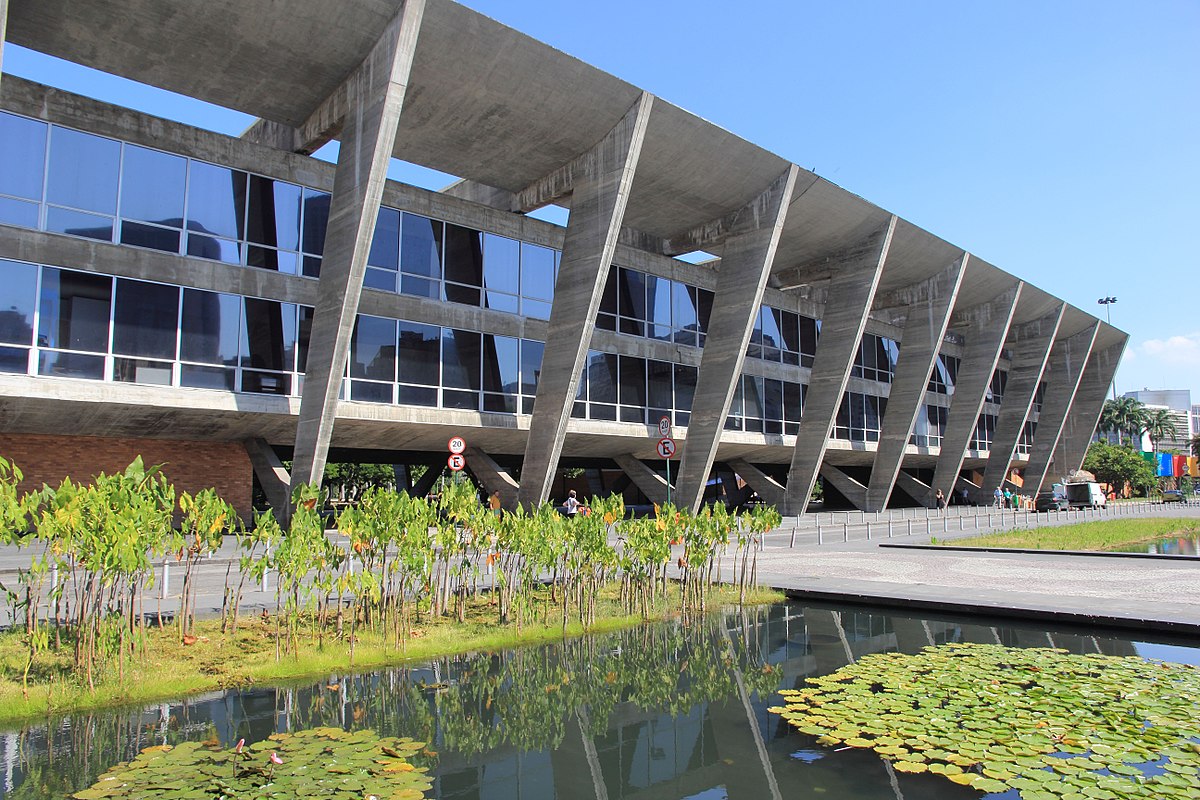
Museum of Modern Art
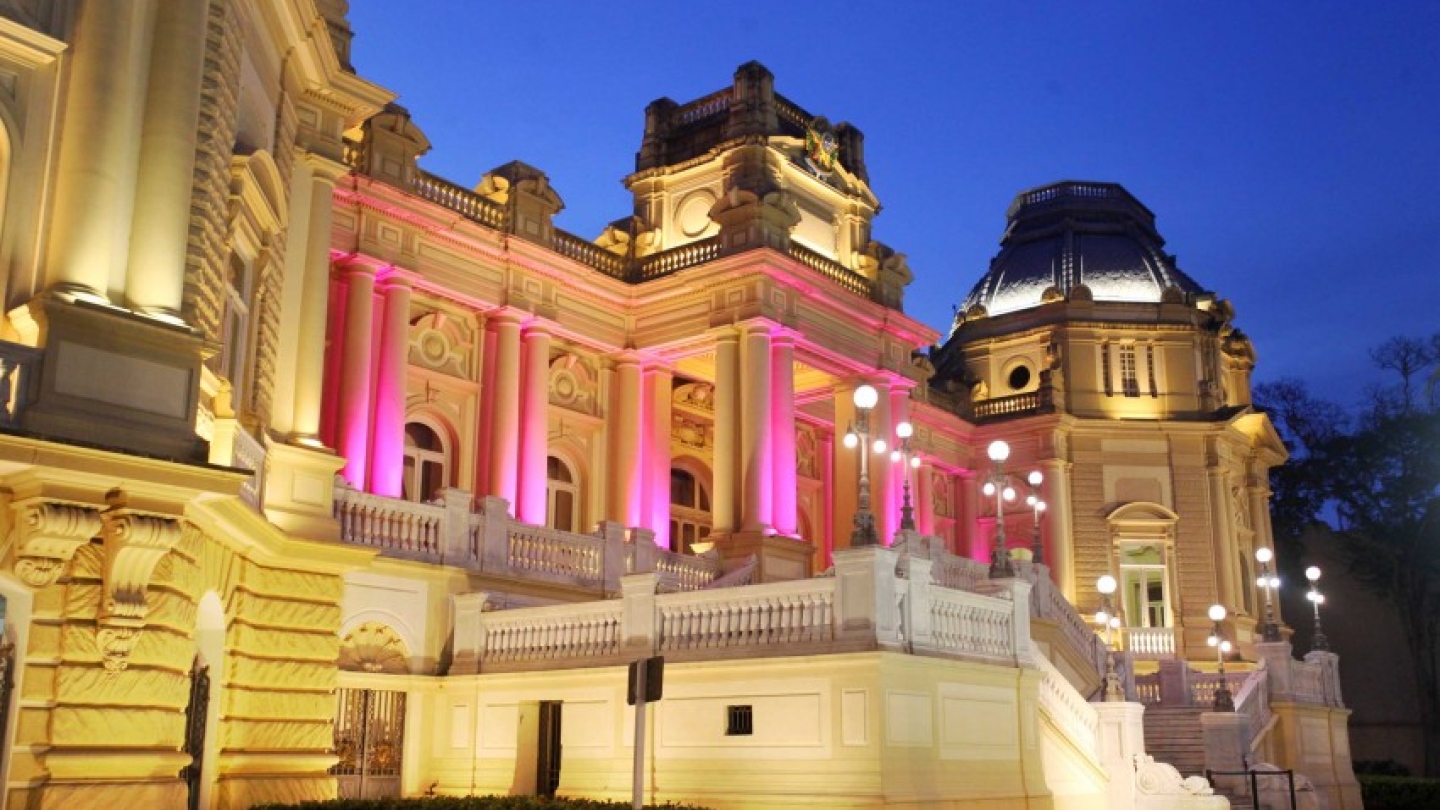
Guanabara Palace

Rio Art Museum

Contemporary Art Museum in Niterói and Sugar Loaf on background
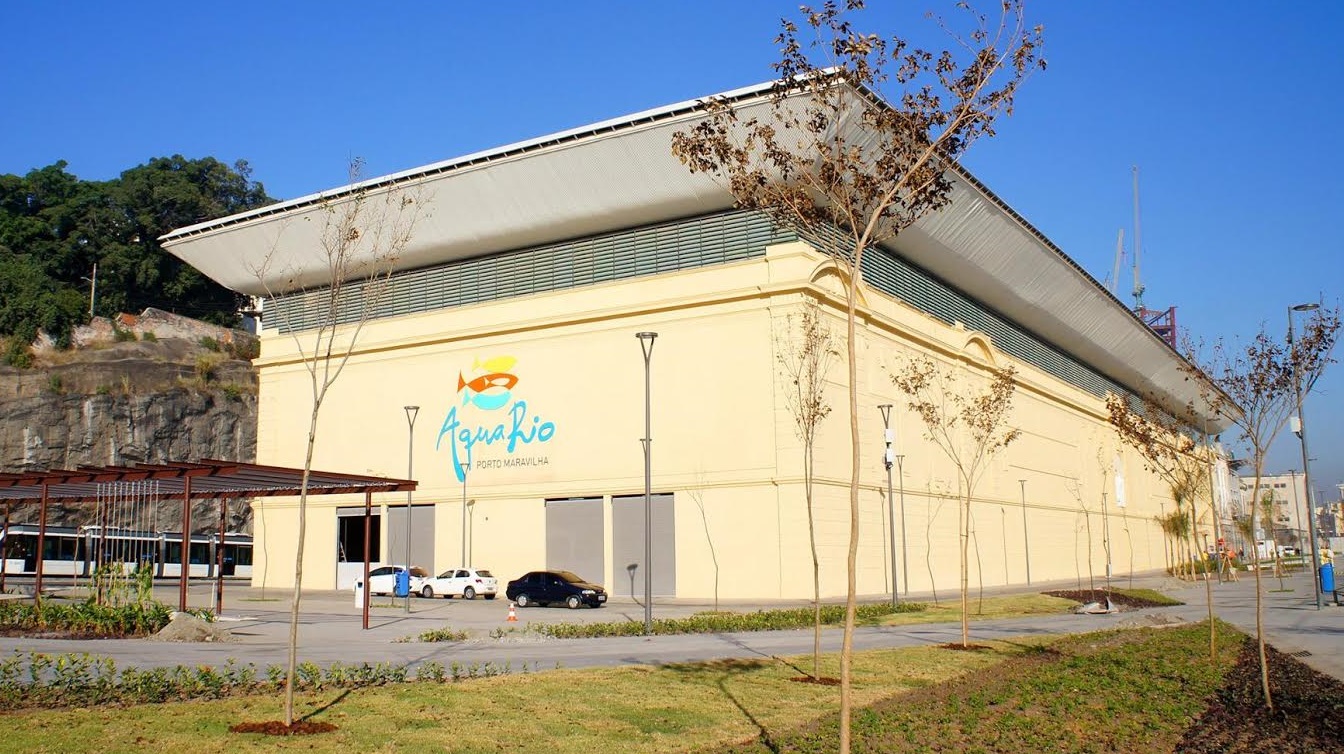
Rio Aquarium

Banco do Brasil Museum
Churches:
Rio de Janeiro is home to some of the most architecturally beautiful churches in the country. Below is a modest list of some churches scattered around the city.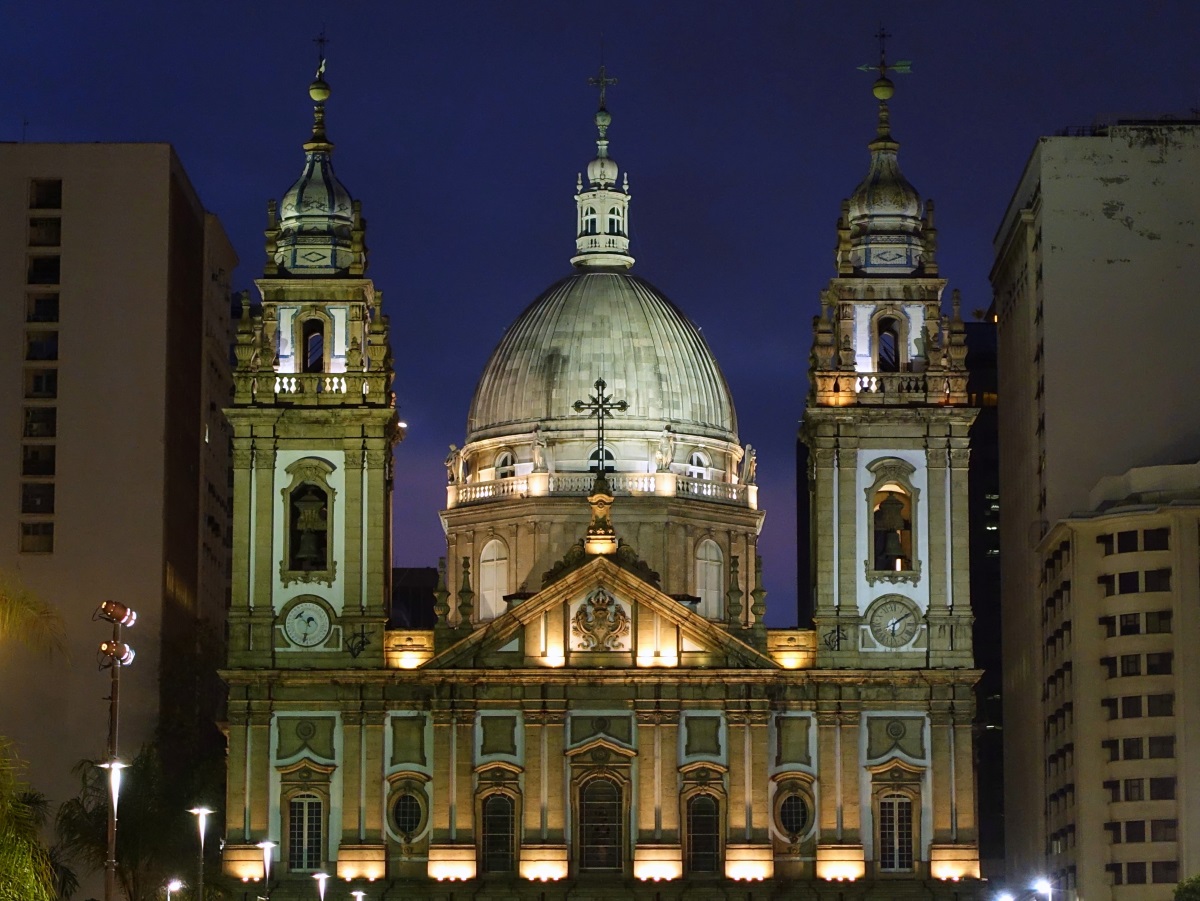
Candelária Church
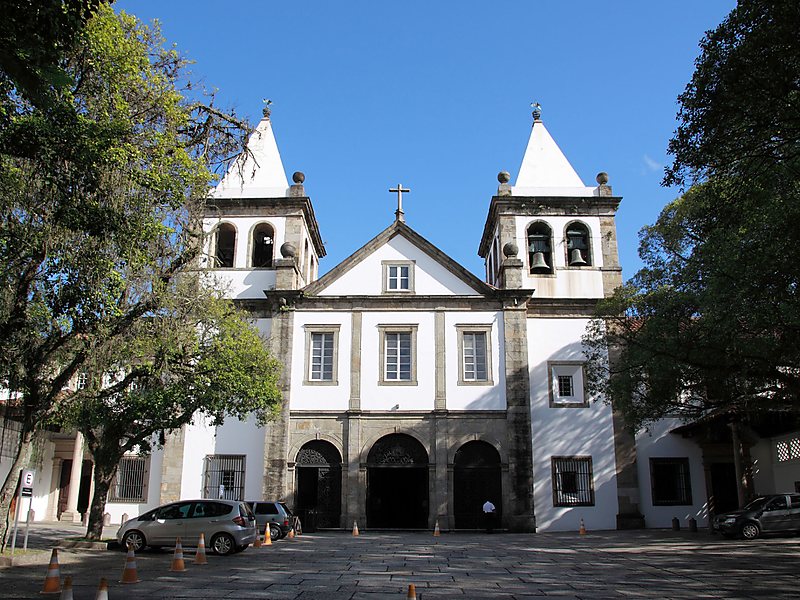
Mosteiro de São Bento
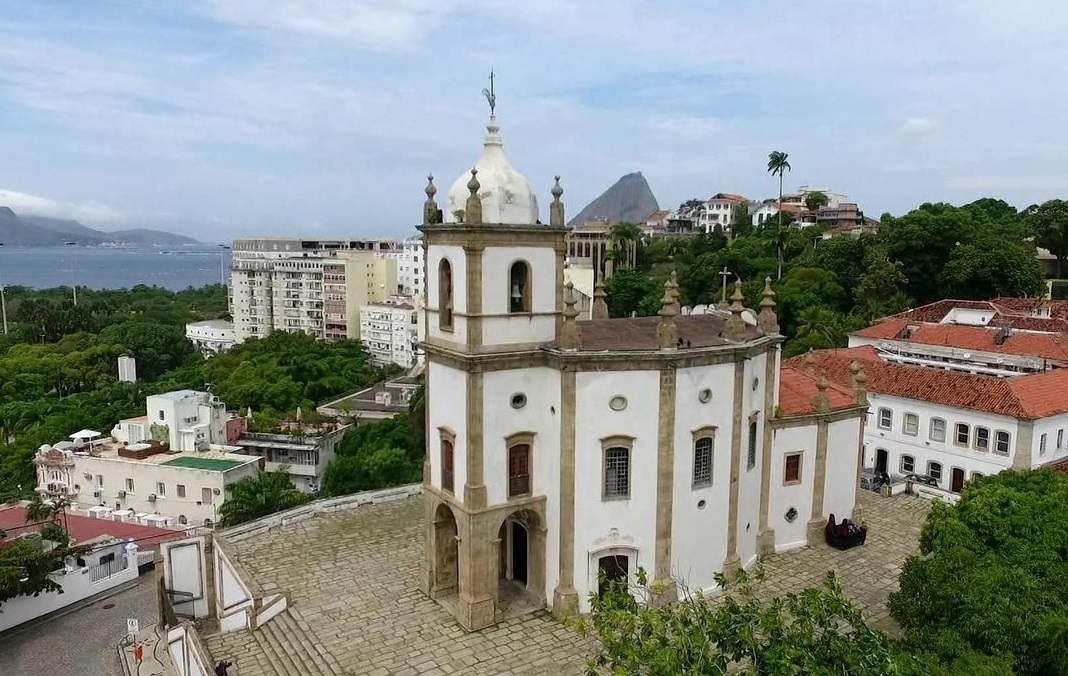
Nossa Senhora da Glória do Outeiro
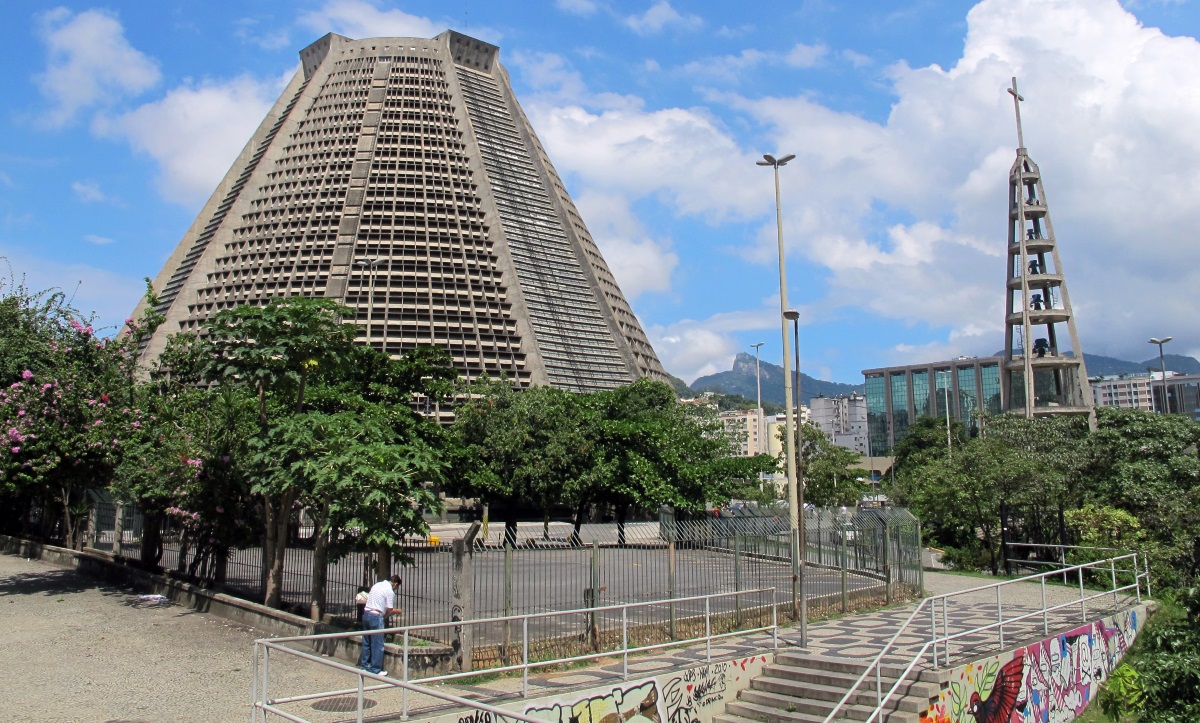
Catedral de São Sebastião
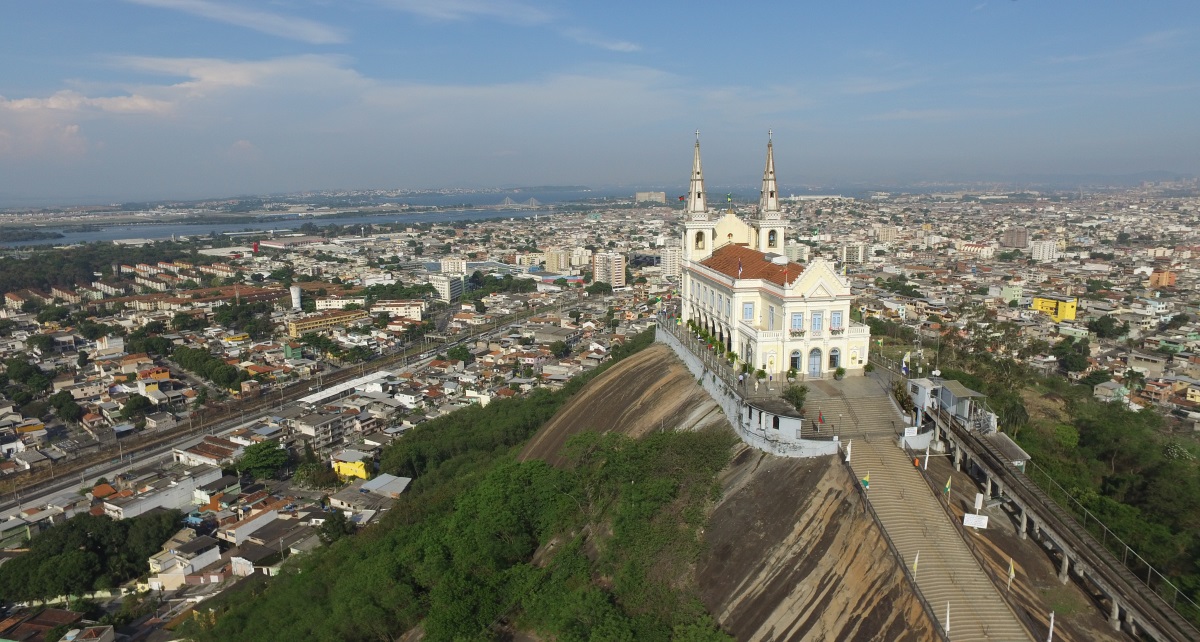
Penha Church
Beaches:
Rio de Janeiro is a littoral city and it has its entire coast covered by stunning beaches for all likings. The most famous beach is Copacabana which is located in the eponymous neighborhood. Copacabana is provided of many bus lines and also has 3 subway stations: Cardeal Arcoverde, Siqueira Campos and Cantagalo. Besides Copacabana, the surrounding Leme, Ipanema and Leblon beaches are great options for those who want to enjoy the sun and see of Rio de Janeiro without leaving the south zone region.
In the west, further from the downtown, there is the Barra da Tijuca beach, excellent option for surfers and visitors. In Barra da Tijuca there are several hotels and the biggest shopping malls in the city. Going even further, following Beira Mar Avenue, you arrive at the Recreio, Macumba, Prainha and Grumari beaches, these last two present a gorgeous forest and mountain landscape. After crossing the Grumari's hill, you arrive at Guaratiba and Barra de Guaratiba, place of famous homey restaurants like Tia Penha's restaurant which is known for its delicious fishes and seafood.
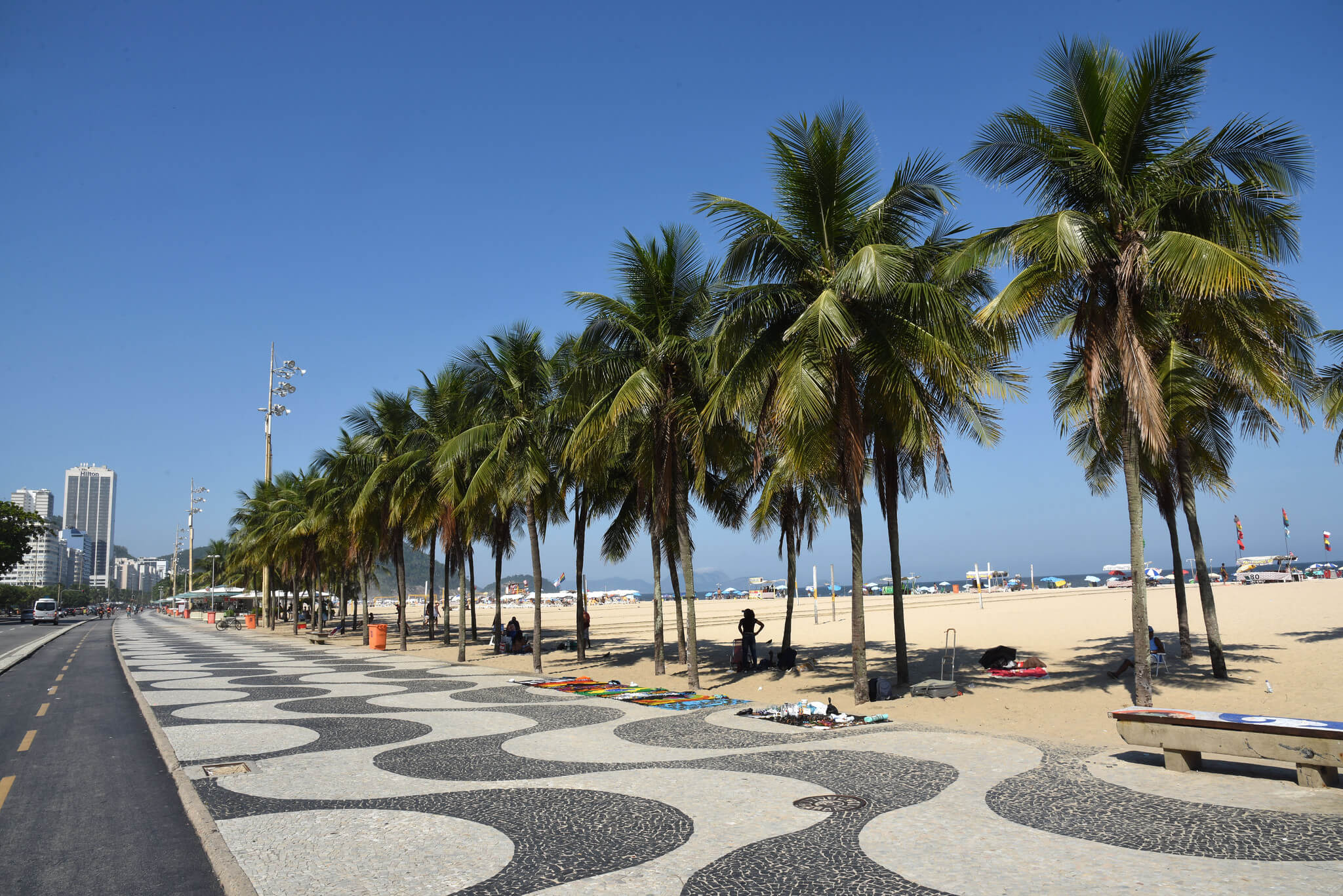
Copacabana beach
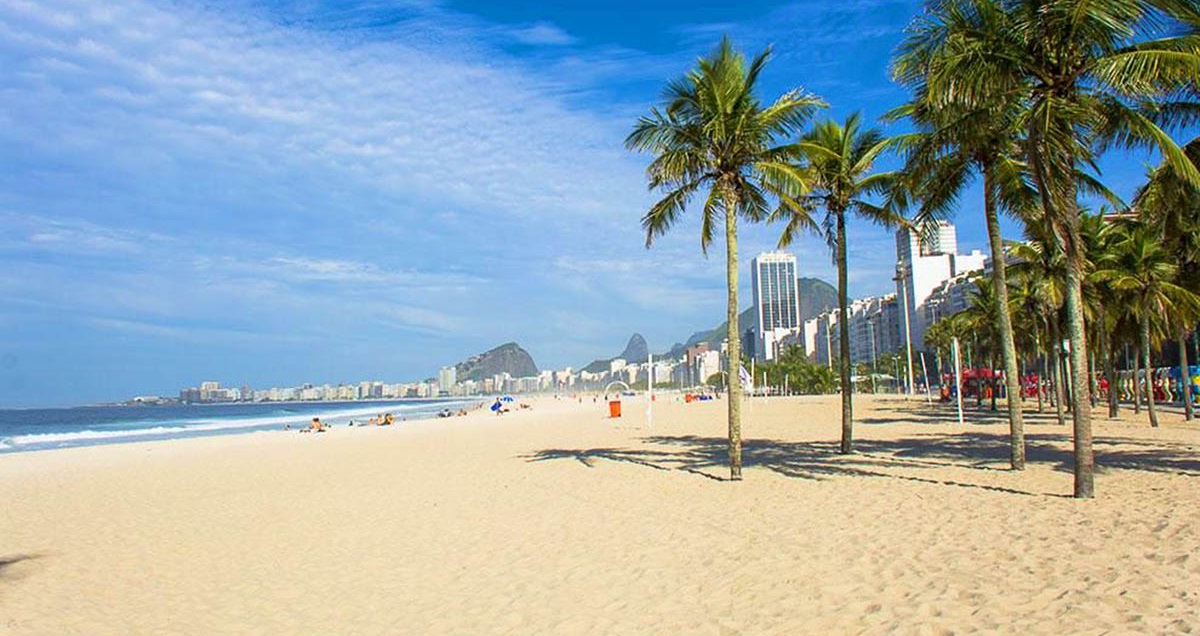
Leme beach
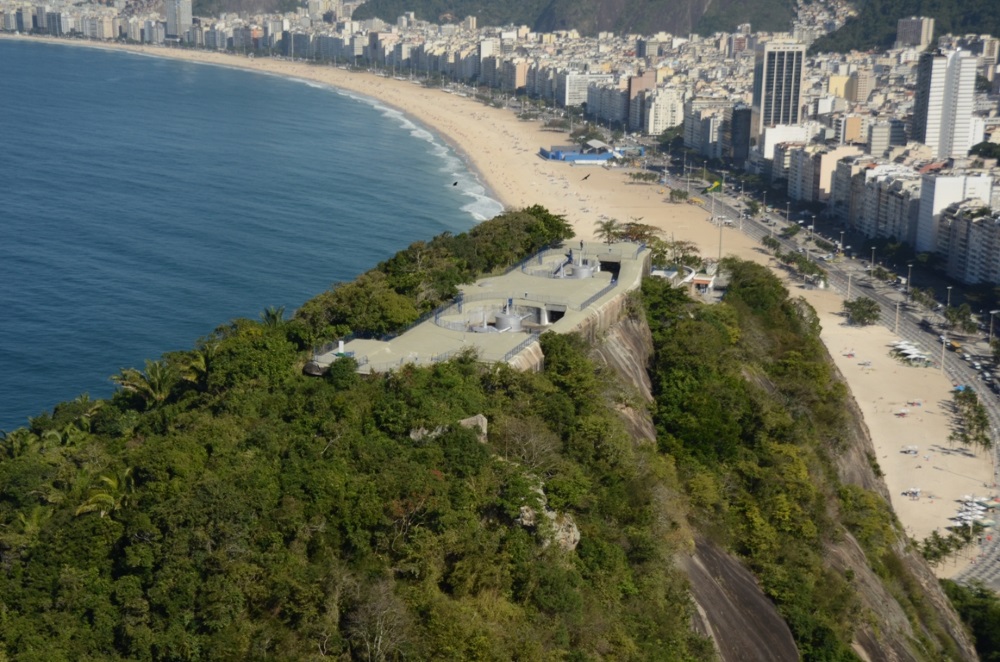
Leme Fortress and Leme beach on background
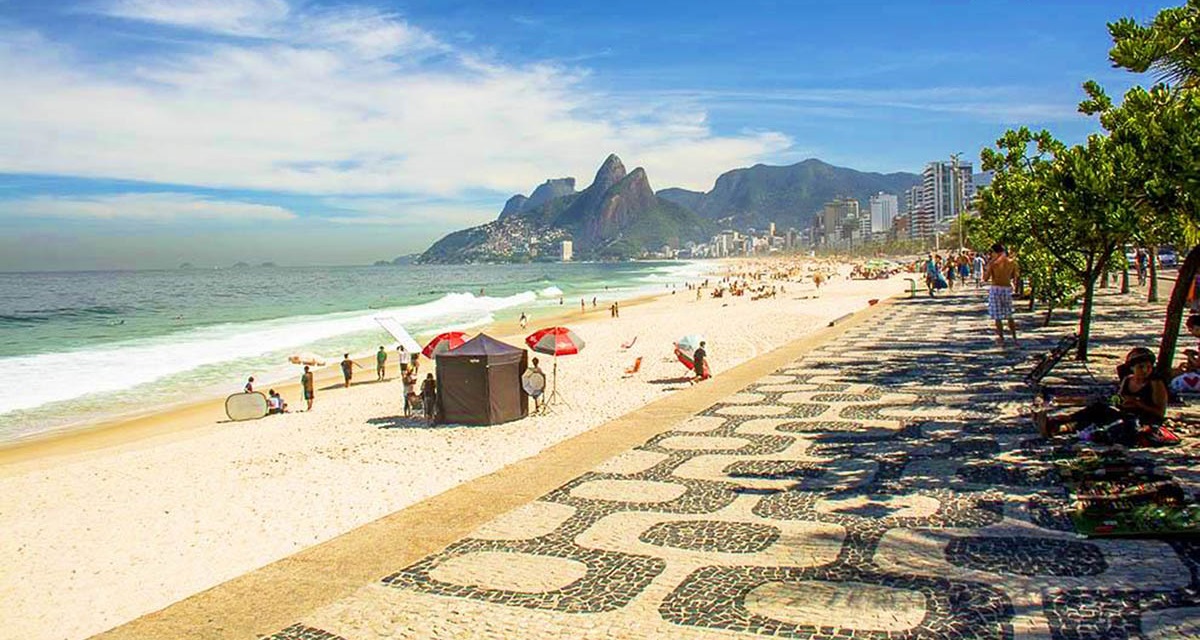
Ipanema Beach - Made Famous by Bossa Nova "The Girl from Ipanema" song by Tom Jobim
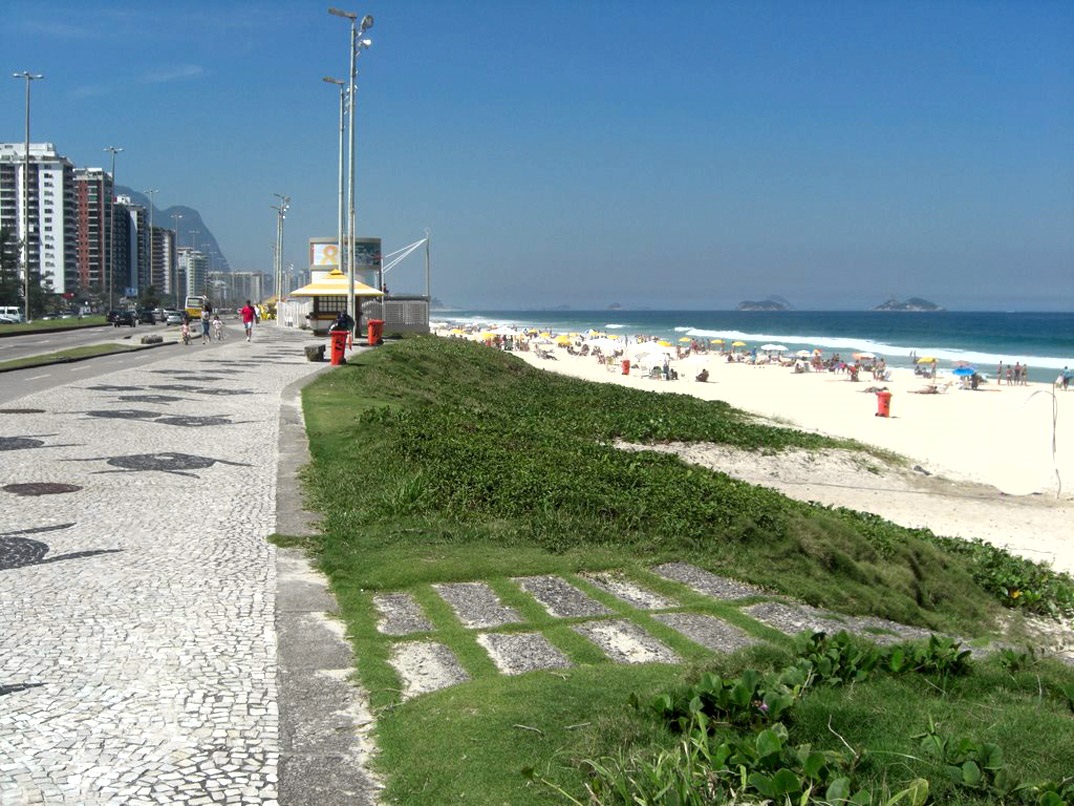
Barra da Tijuca beach
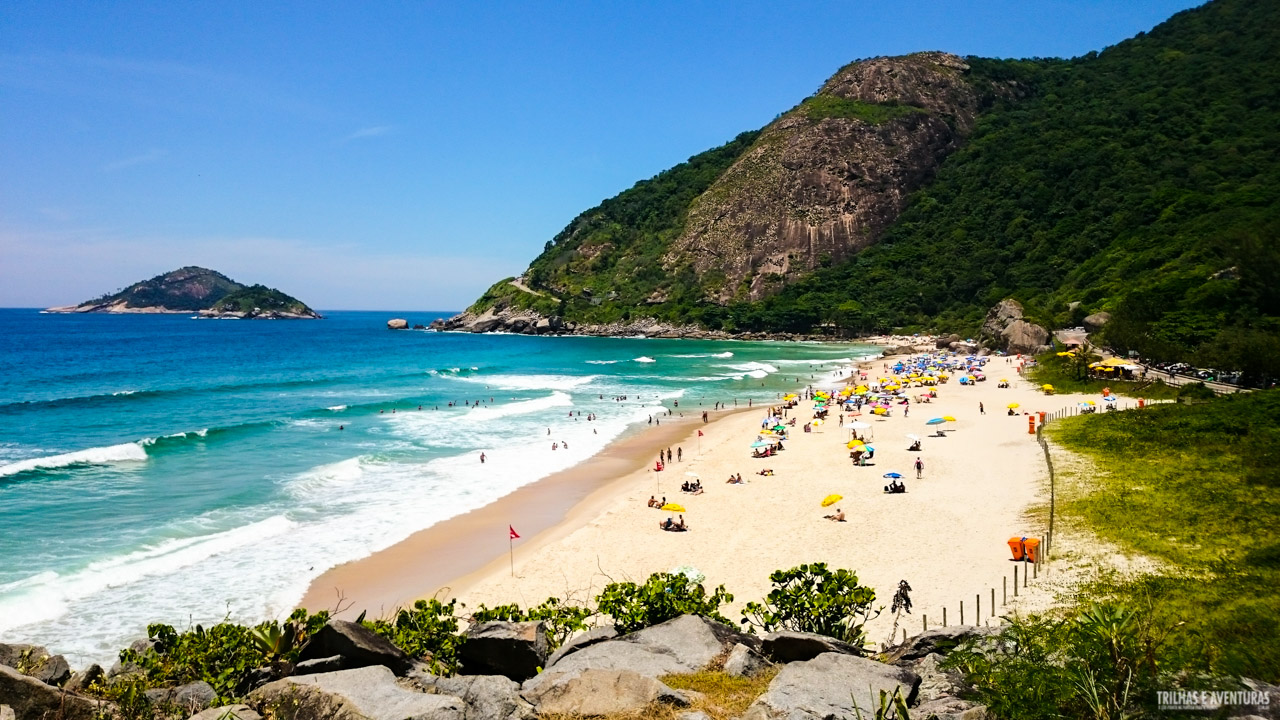
Prainha beach
Restaurants and nightlife:
Rio de Janeiro is known for its attractive gastronomy and lively nightlife. There are tons of bars, pubs and nightclubs spread all over the city. The bohemian Lapa neighborhood is internationally known for its variety of options and mainly to be the stronghold of samba and bossa nova in the local night. Besides Lapa, Copacabana, Cinelândia, Tijuca, Largo do Machado, Ipanema, Lagoa and Barra da Tijuca neighborhoods are full of great options for visitors appreciate the Rio de Janeiro's relaxed and informal climate. The city also is known for excellent seafood restaurants, popular food, excellent steak houses and international cuisine. If you are a meat lover, you must try Fogo de Chão or Mocellin stake houses. In Niterói, many bars and restaurant can be found at Polo Gastronômico Jardim icaraí, São Franscisco neighborhood and for a more informal university environment you can go to Cantareira square.
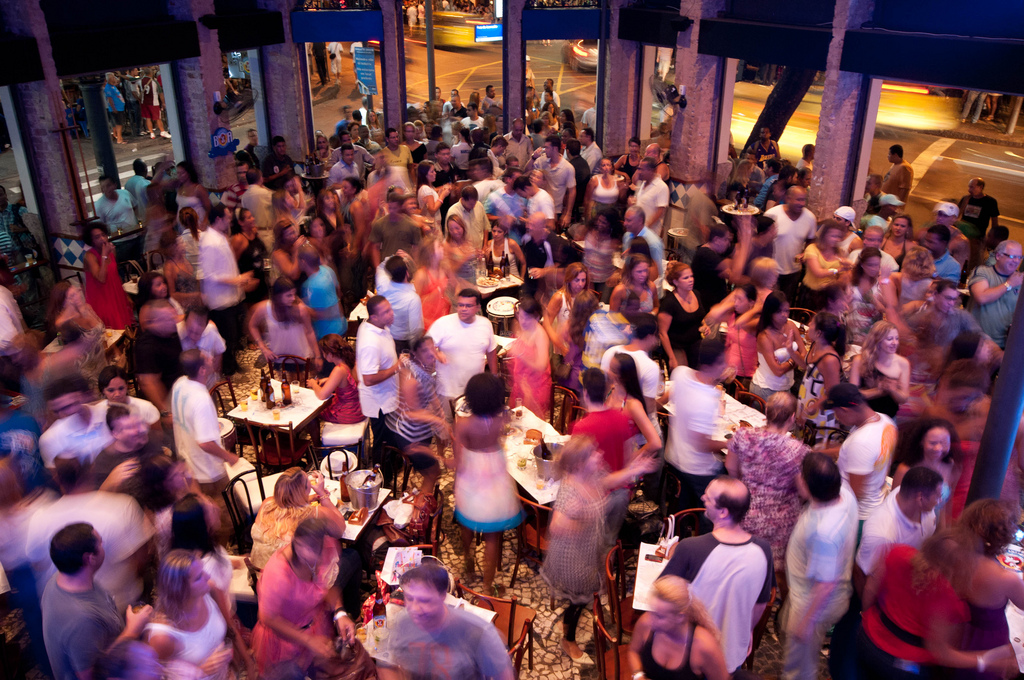
Crowded bar at Lapa
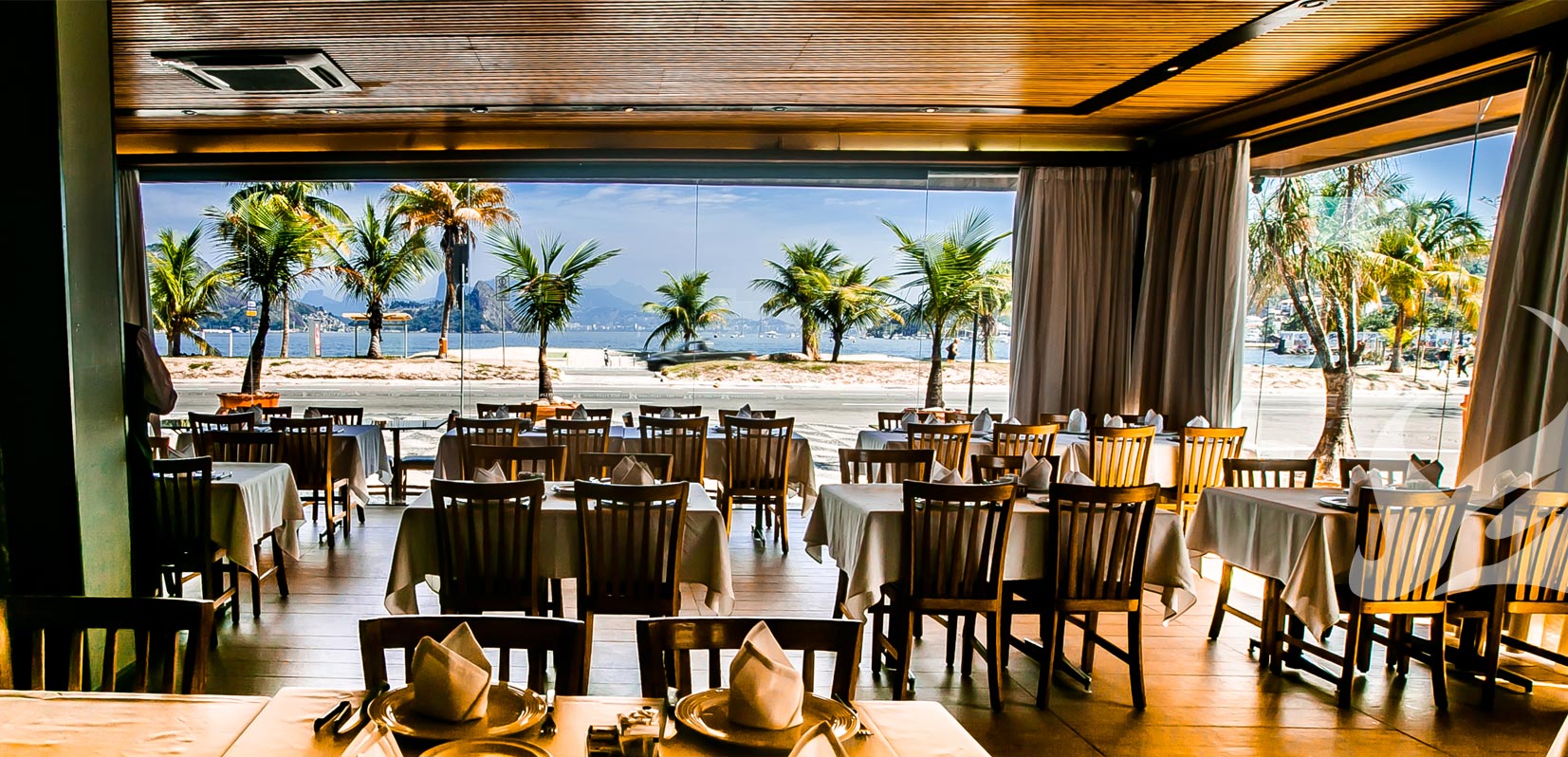
Mocellin restaurant by São Francisco beach in Niterói
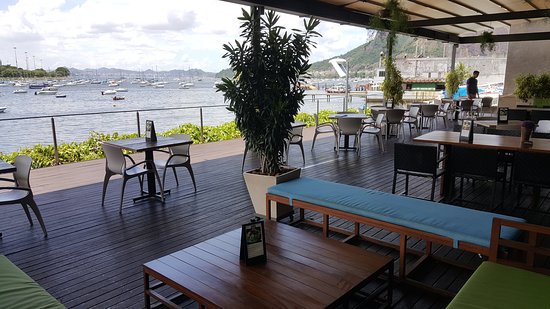
Fogo de Chão restaurant by Botafogo beach
There is a rising vegetarian/vegan trend in Brazil nowadays. Hence, if you are vegetarian/vegan, most places and restaurants are aware of this trend and offer vegetarian and vegan options. In addition there is also a growth in restaurants and events for this type of cuisine. Some excellent vegetarian and vegan oriented restaurants are: Org Bistrô, Verde Vício, Prana Vegetariano, Hareburger, Taj Mahal and Veggie Govinda.
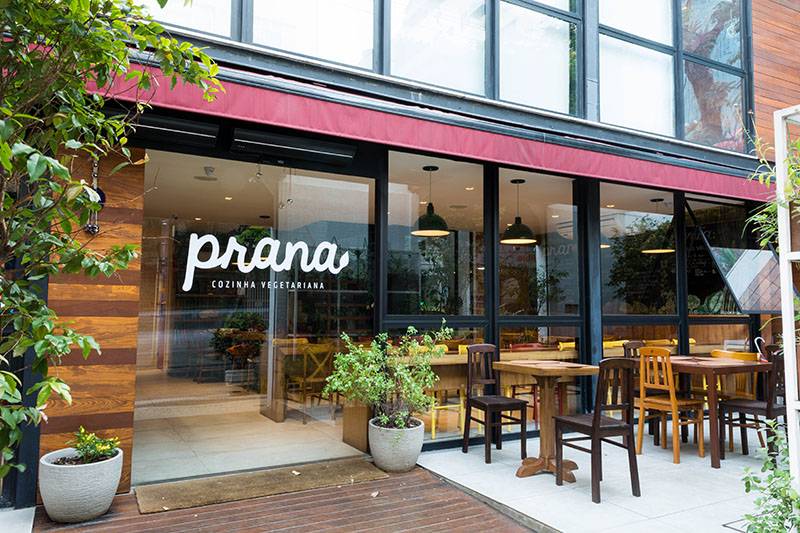
Prana Vegetariano restaurant
Airports:
Two commercial airports are available for visitors: Tom Jobim International Airport (GIG) and Santos Dumont Airport (SDU).
Tom Jobim International Airport (GIG), located at Ilha do governador and formerly known as Galeão, operates the main international flights. It is located 30km from the downtown and 40km from the Barra da Tijuca. For visitors arriving or leaving the airport, the following options are available:
- Uber (Recommended if you have large and heavy luggage)
- BRT (Large articulated buses)
- City and intercity buses
- Shuttles
- Car rental companies
- Cooperative taxi
- City taxi
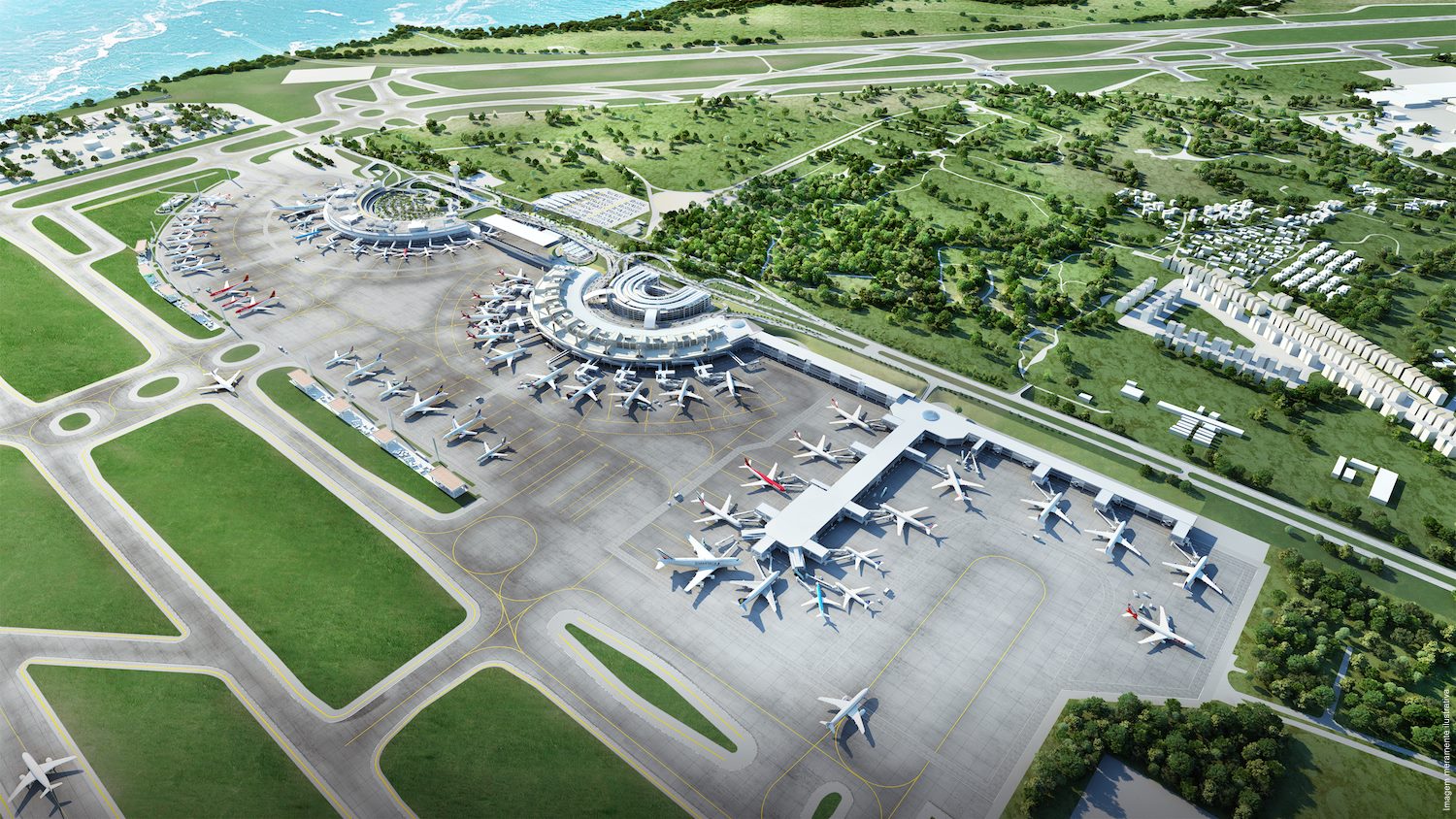
Tom Jobim International Airport
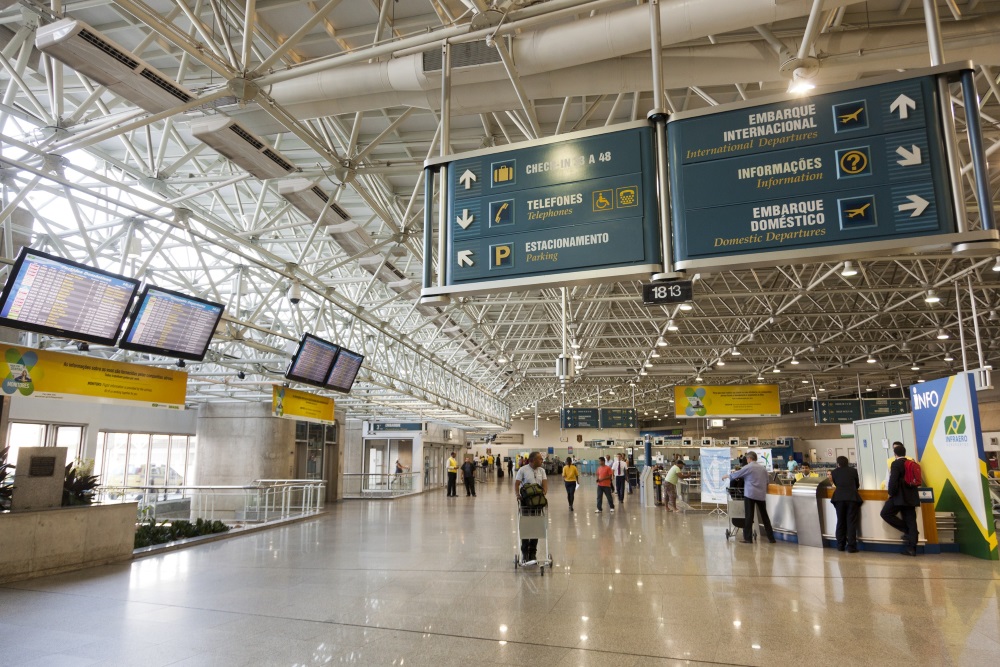
Tom Jobim International Airport - Inside Terminal
Santos Dumont Airport (SDU) is located in downtown Rio de Janeiro. It is a comfortable airport and operates domestic flights with the convenience of being close to tourist and business districts. Currently there is a tram line connecting the airport to the Bus Terminal Novo Rio. For visitors arriving or leaving the airport, the following options are available:
- Uber (Recommended if you have large and heavy luggage)
- City and intercity buses
- Tram
- Car rental companies
- Cooperative taxi
- City taxi
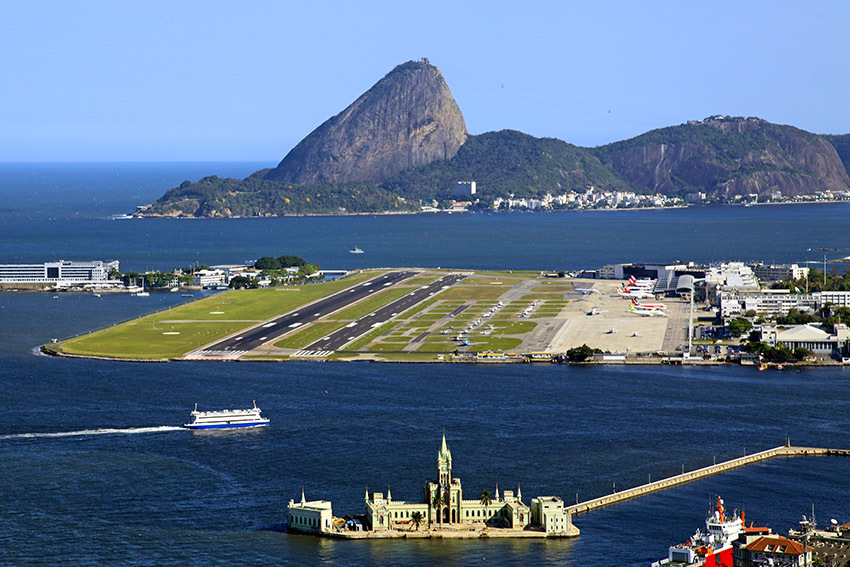
In this picture you can see the Ilha Fiscal Palace, a ferry boat arriving in Rio, Santos Dumont Airport and Sugar Loaf on the background.
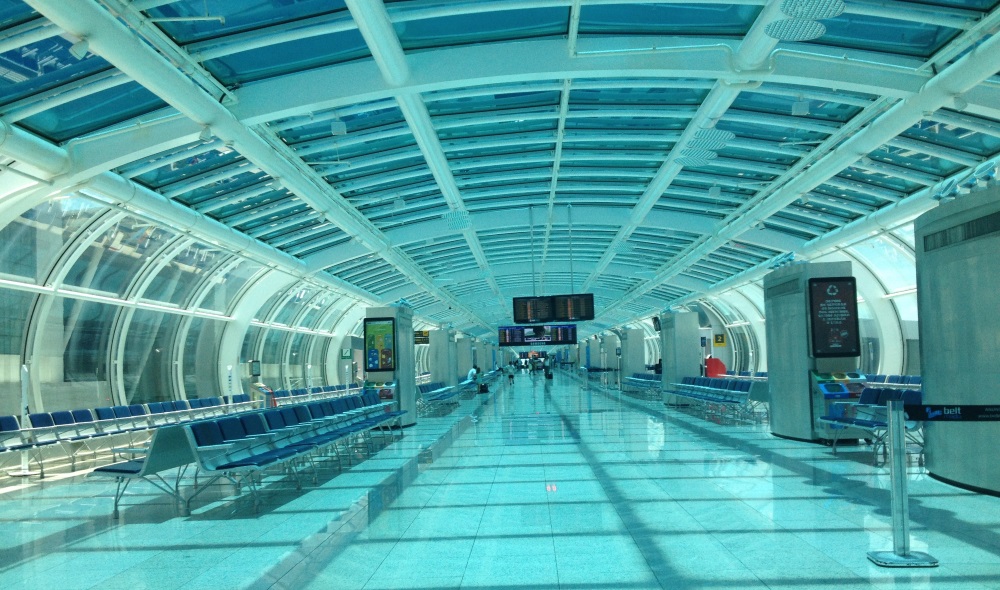
Santos Dumont Airport - Inside Terminal
Note that at both airports, car rental services are available. There are stands of information scattered in airport terminals. See a short list of the major rental car below:
- Localiza
- Movida
- Hertz
- Avis
- Unidas
And Much More...
What was covered in this article in just a tiny portion of what Rio has to offer. Come and visit Rio to experience the Wonderful City. Check out the website visit.rio to see even more options.



